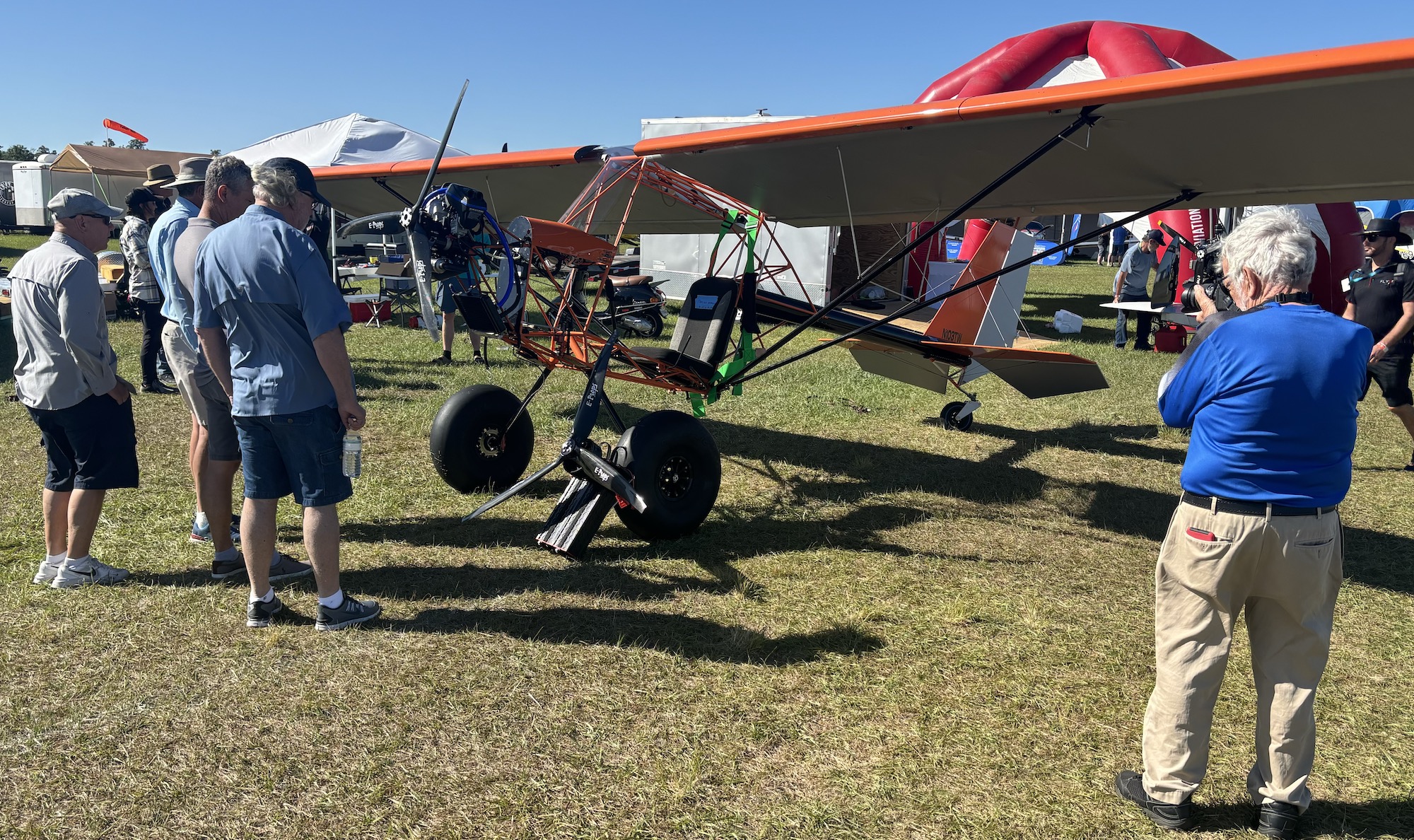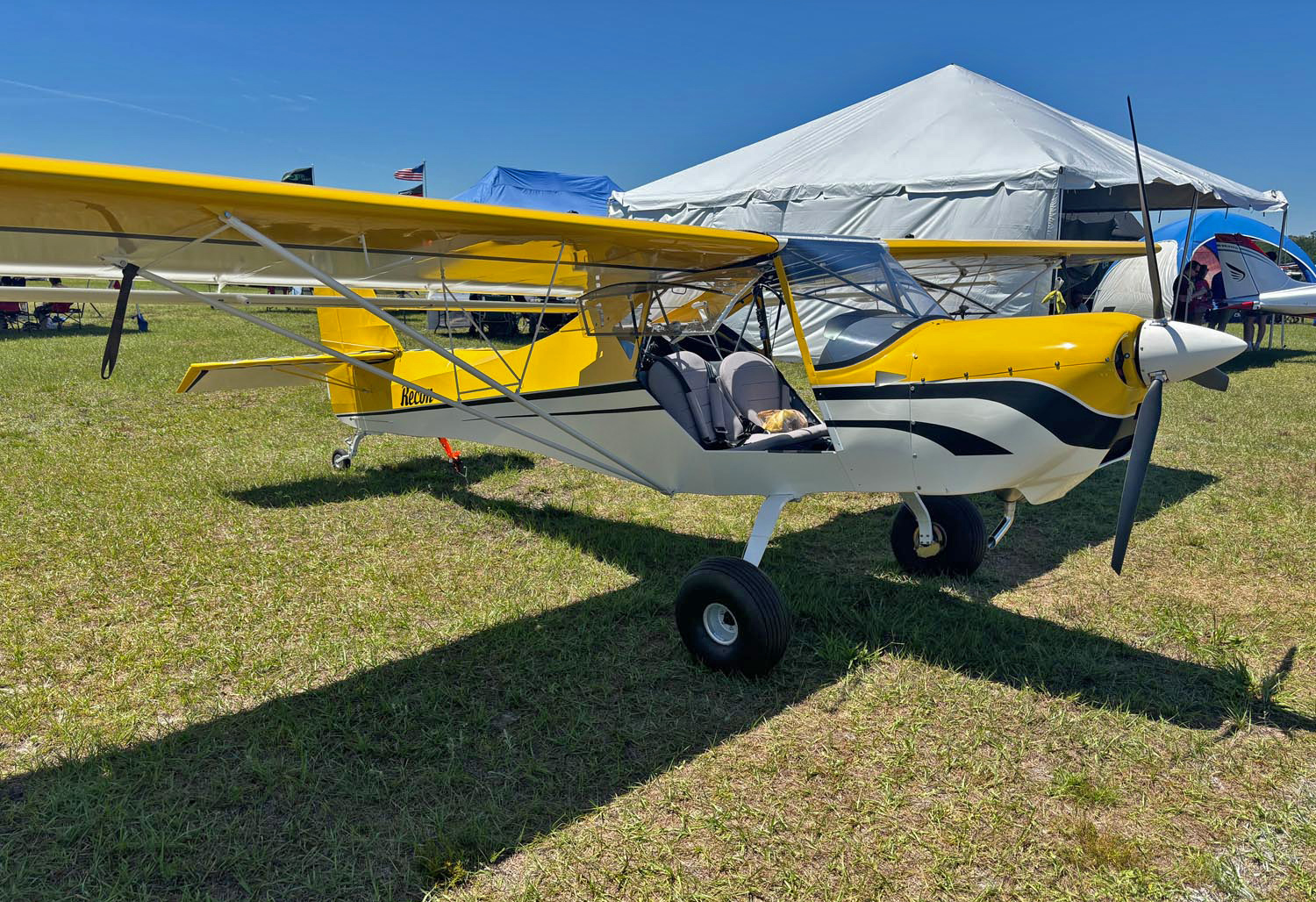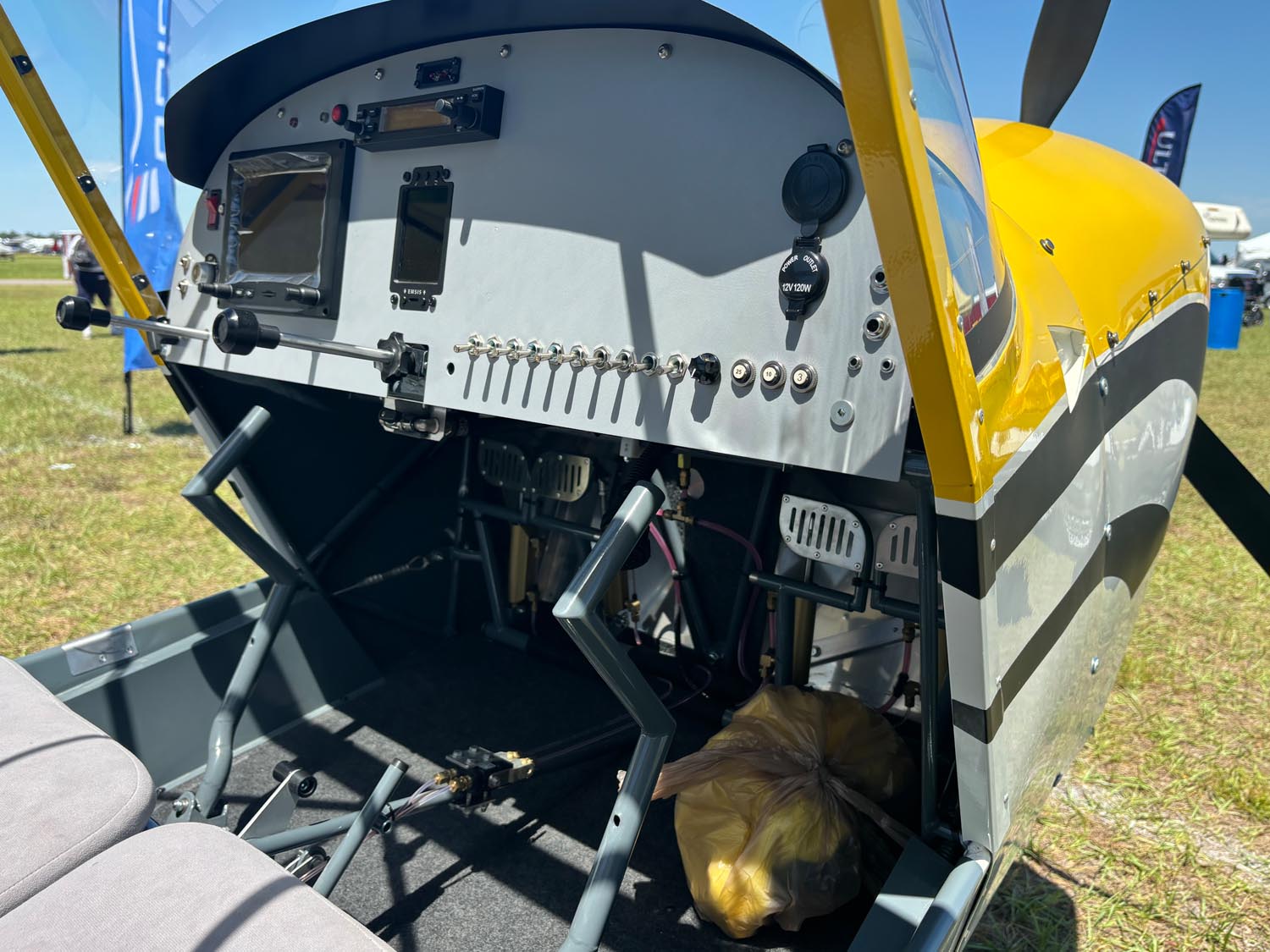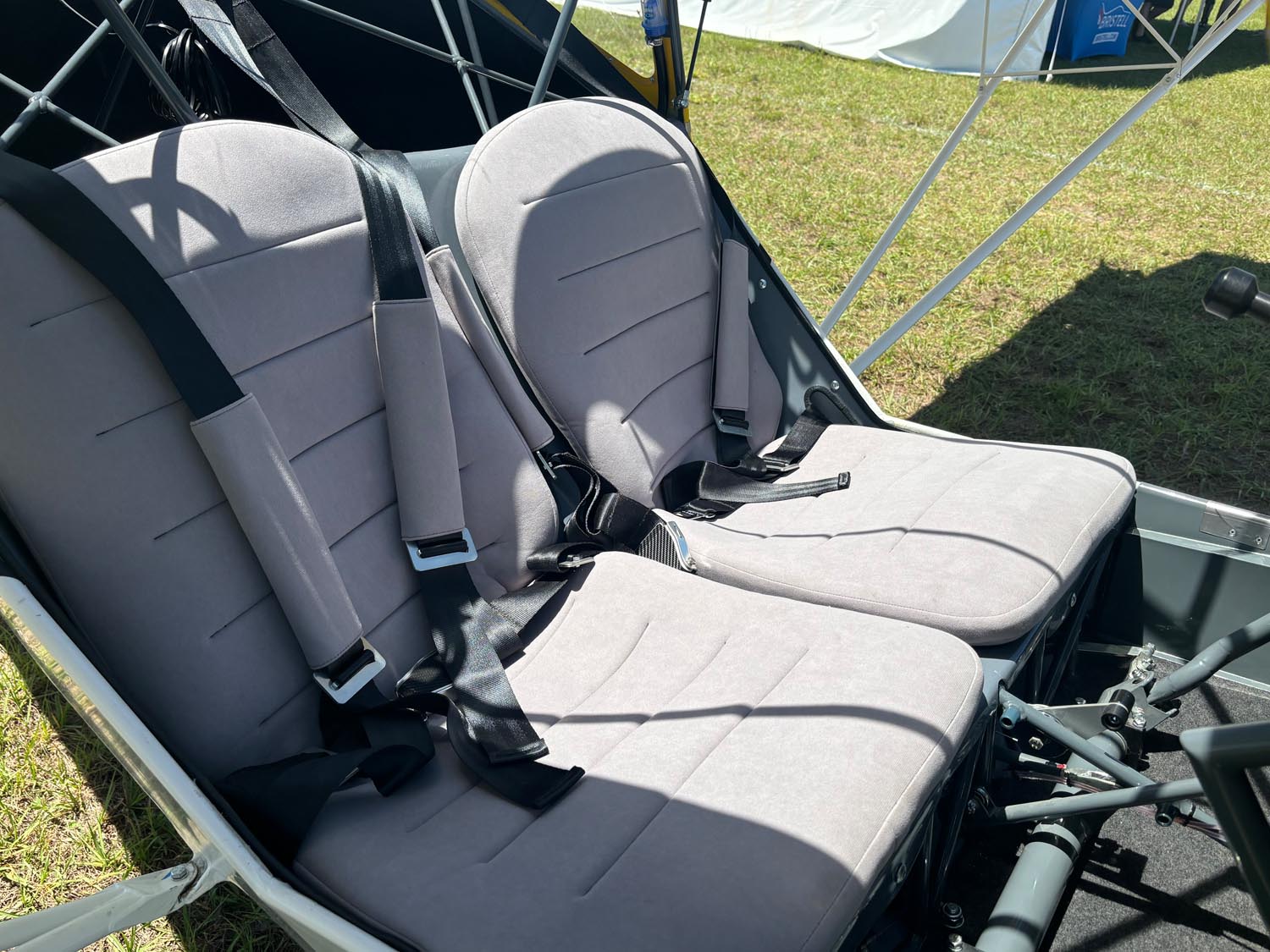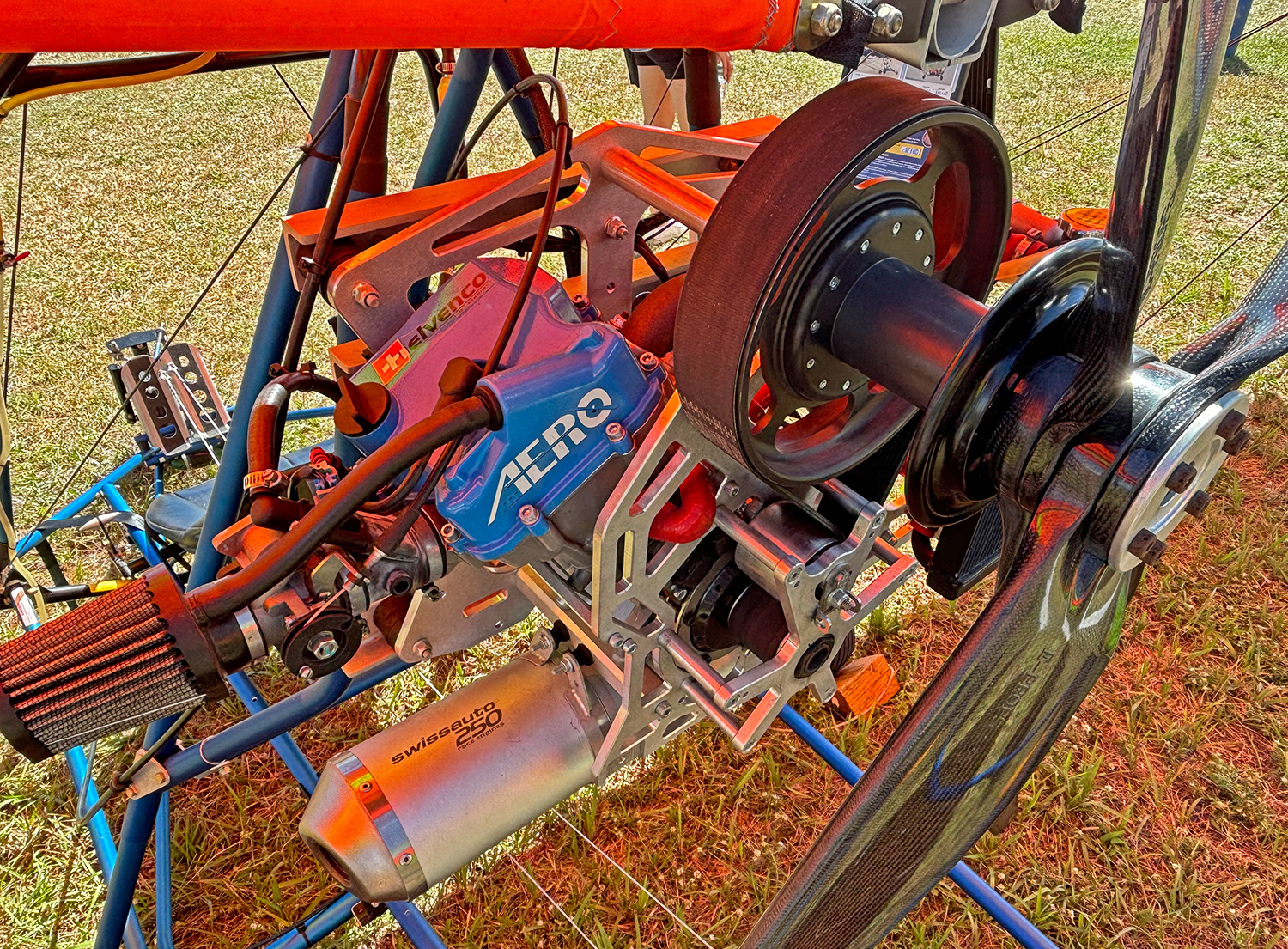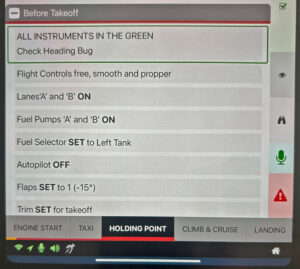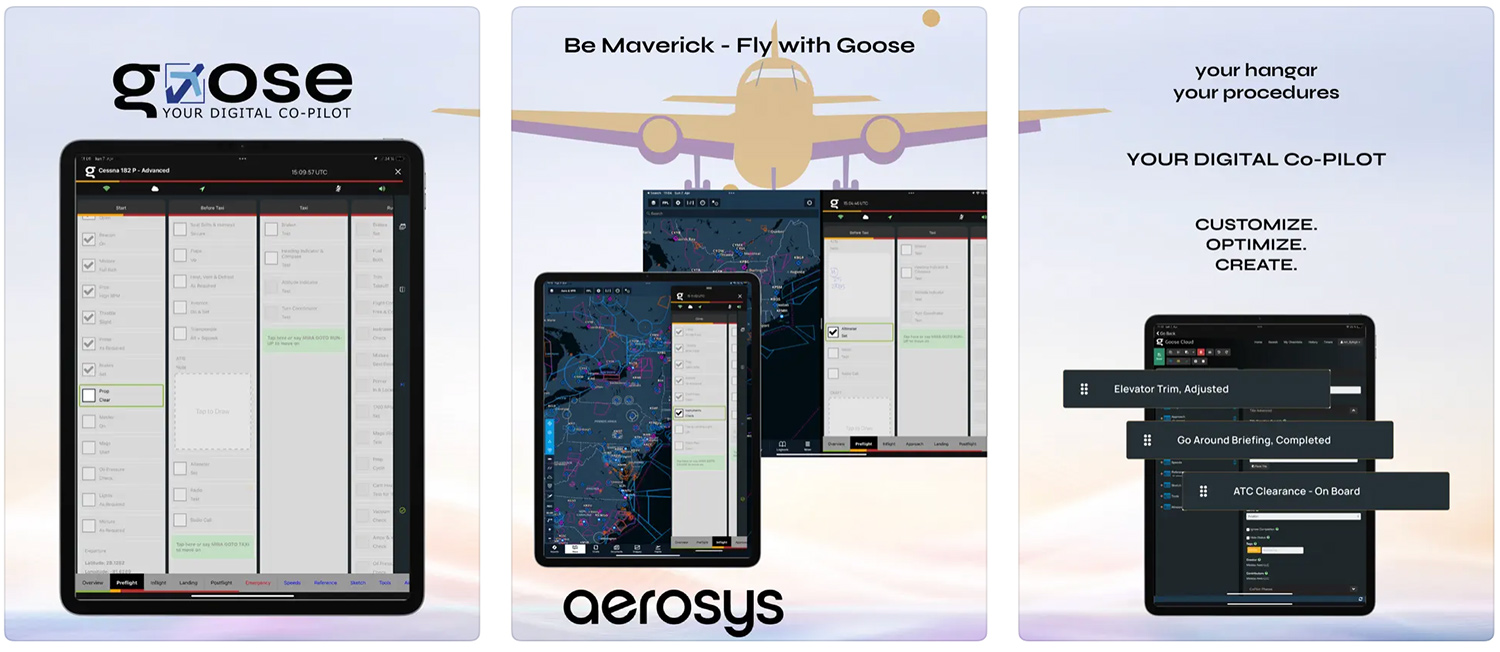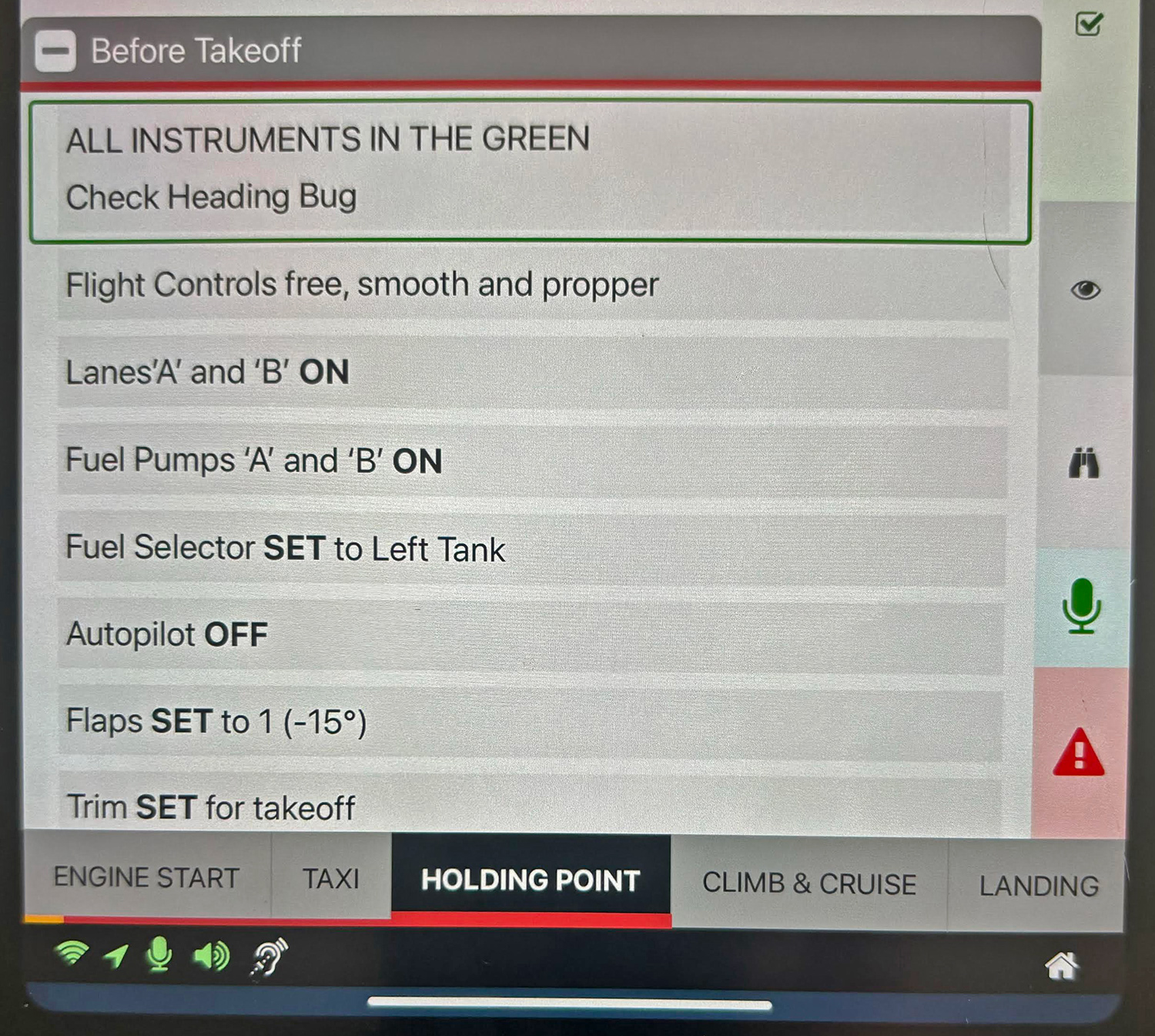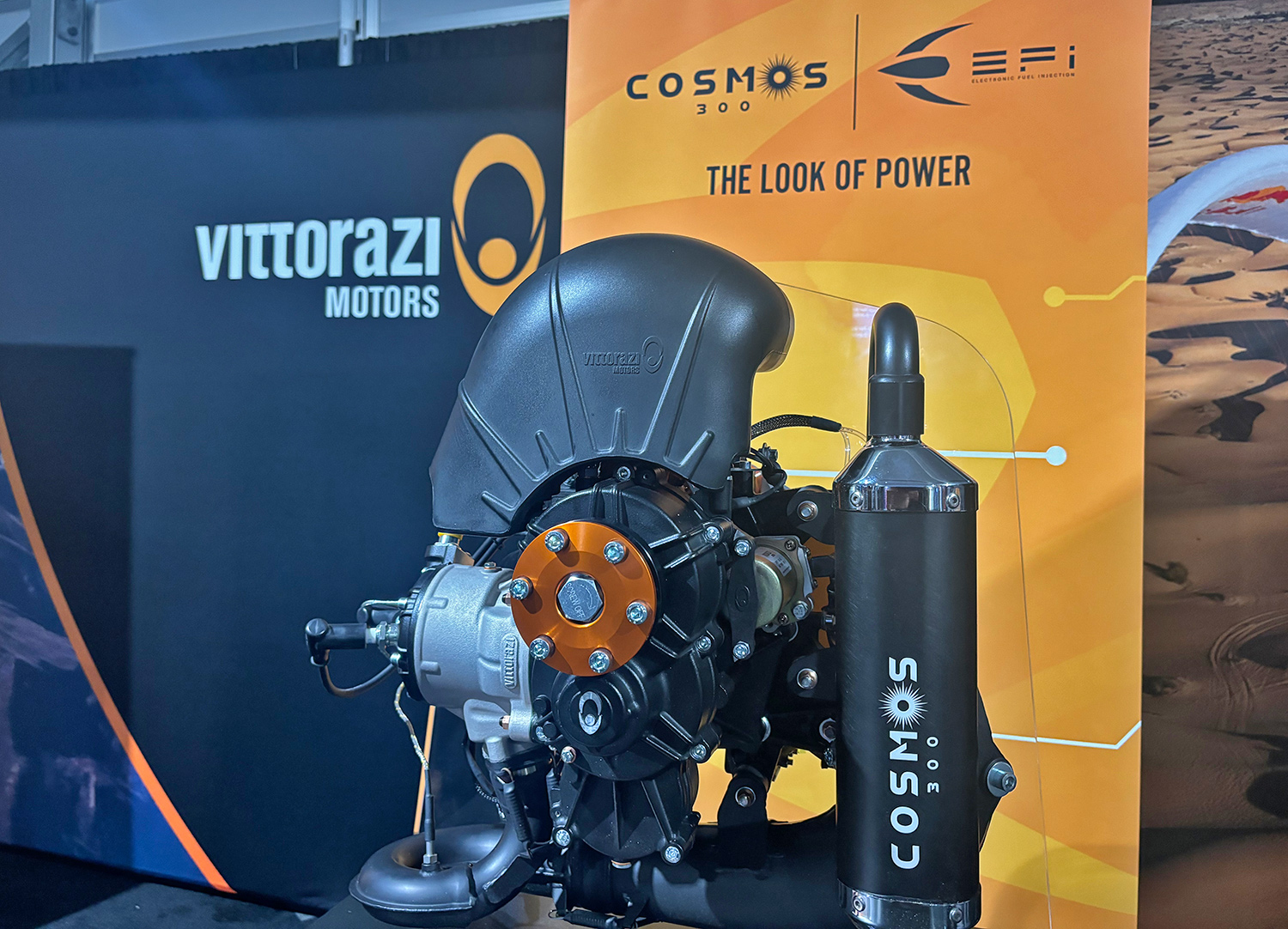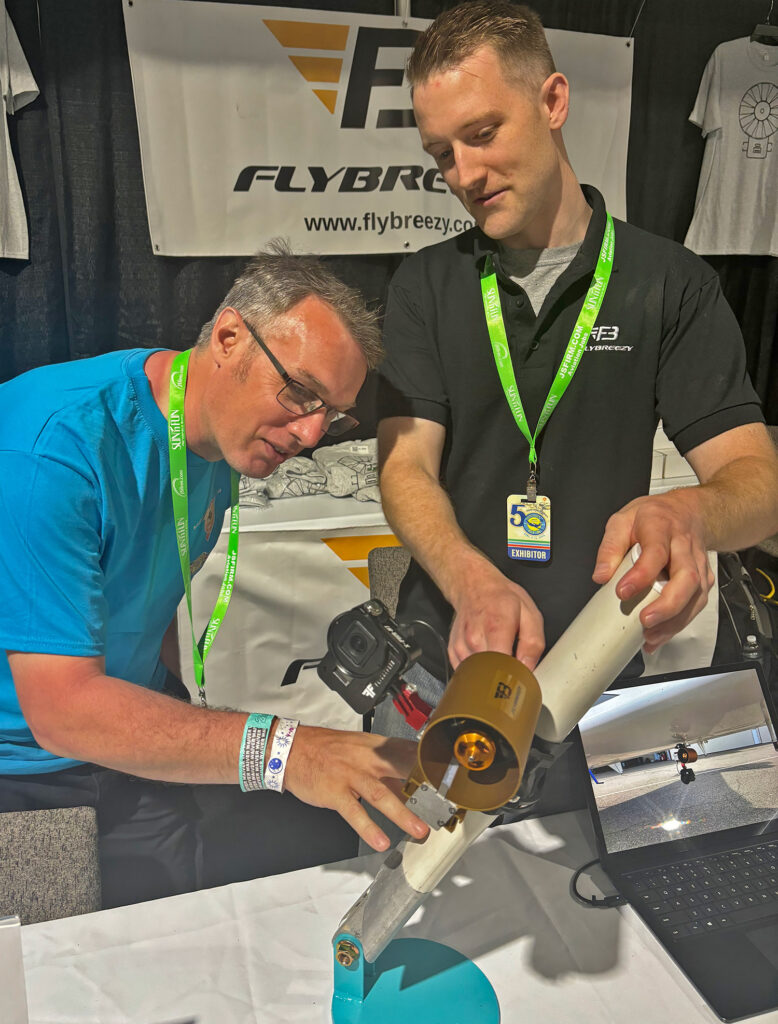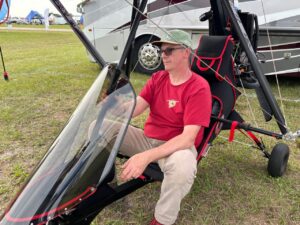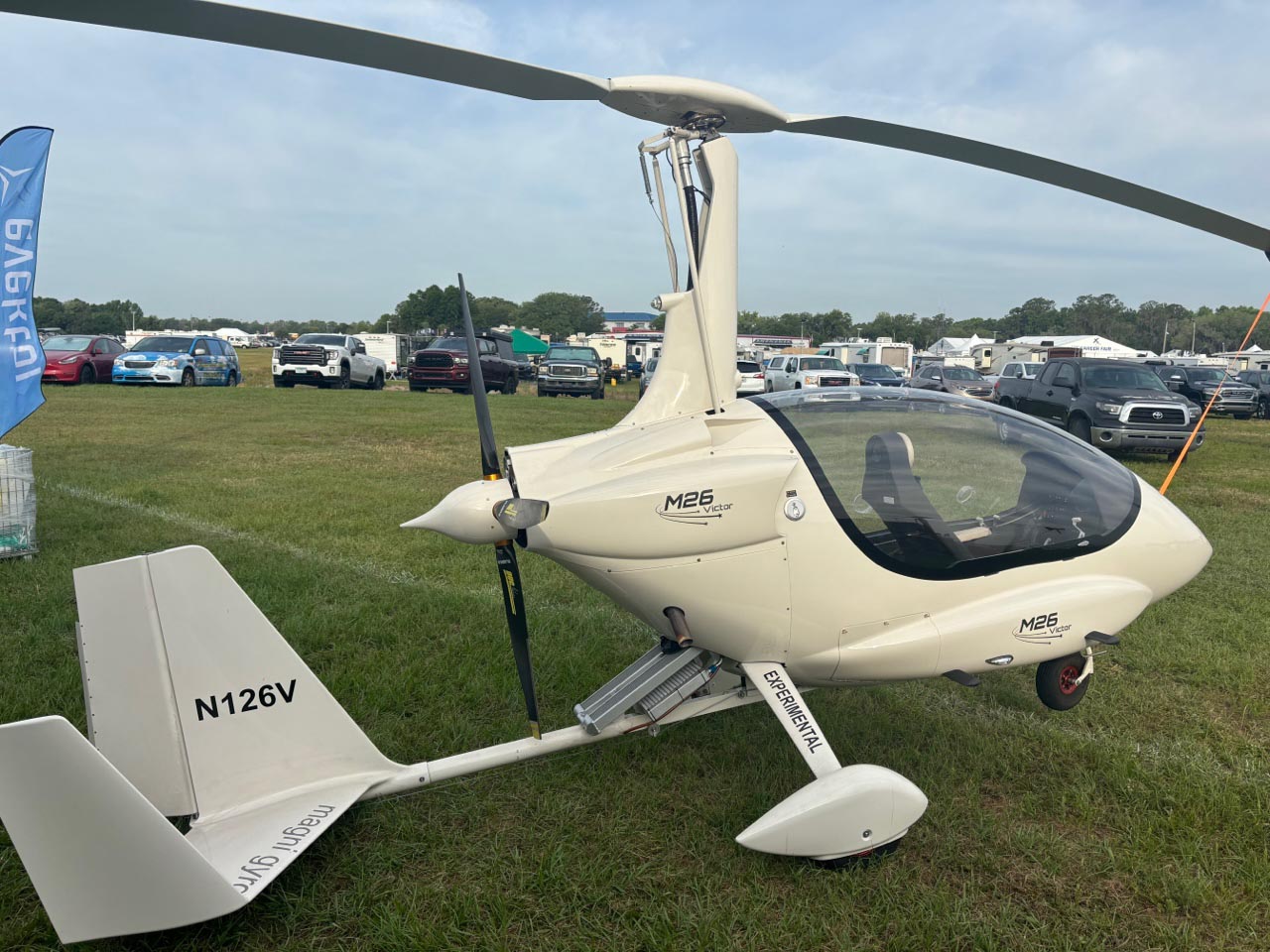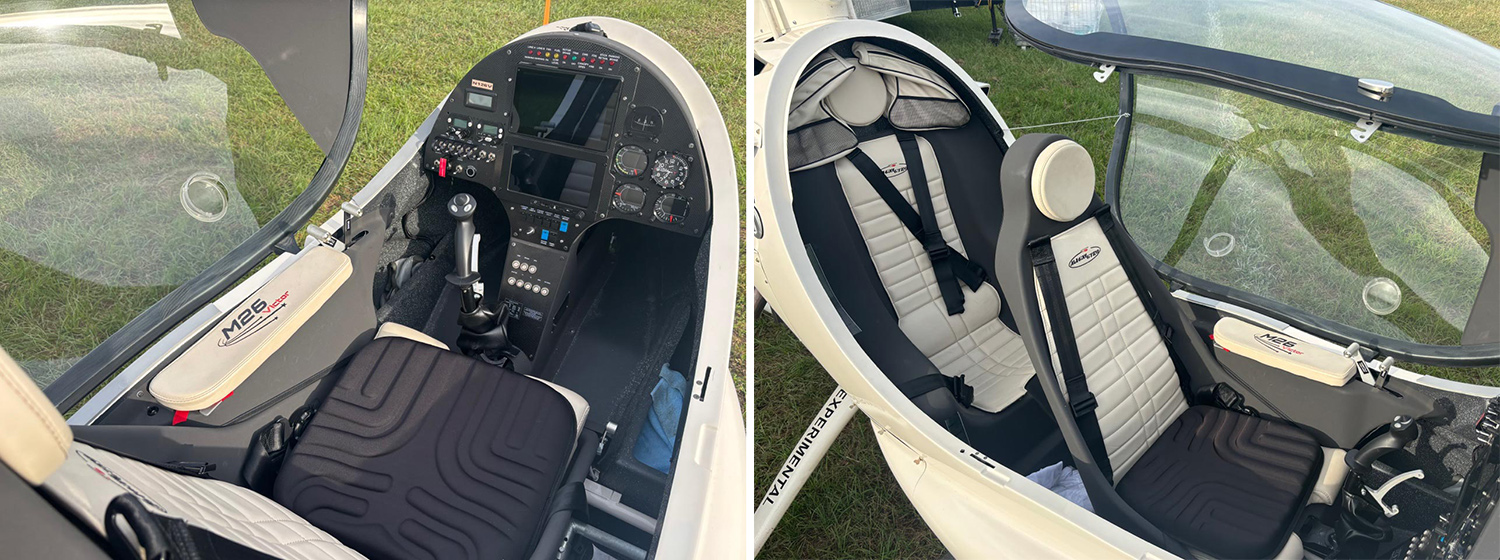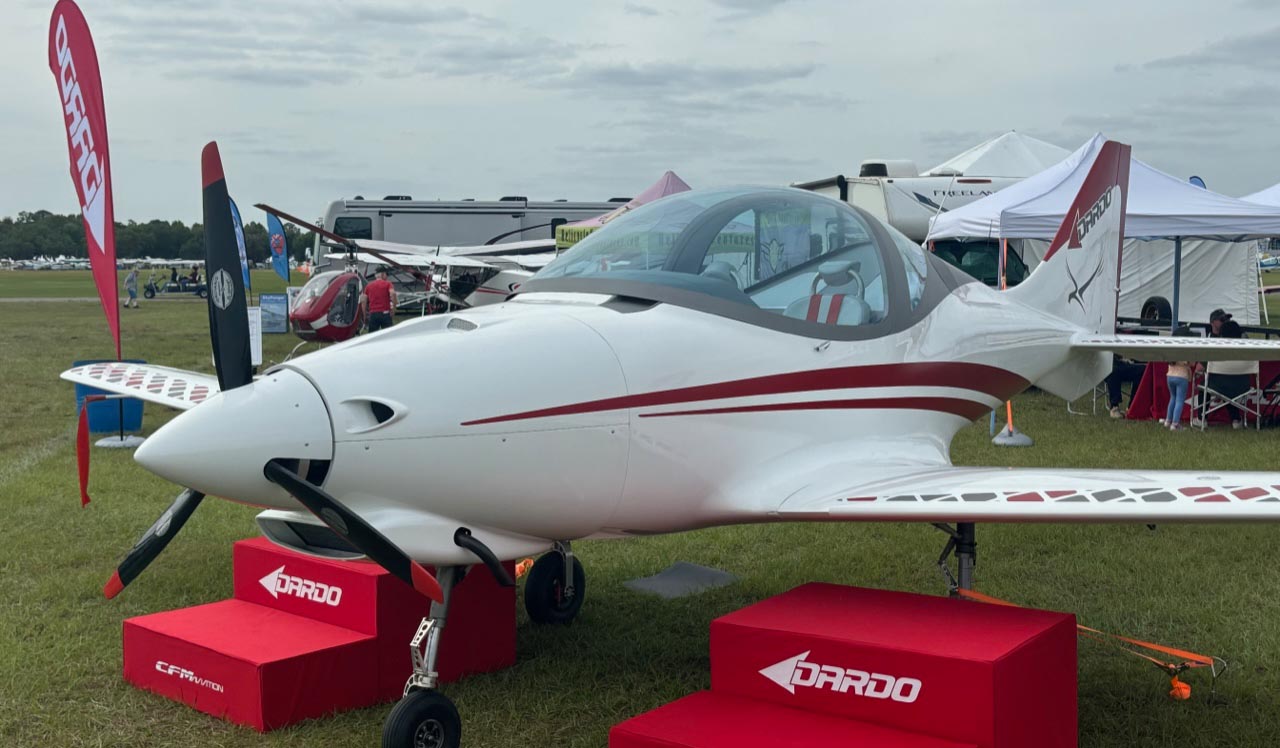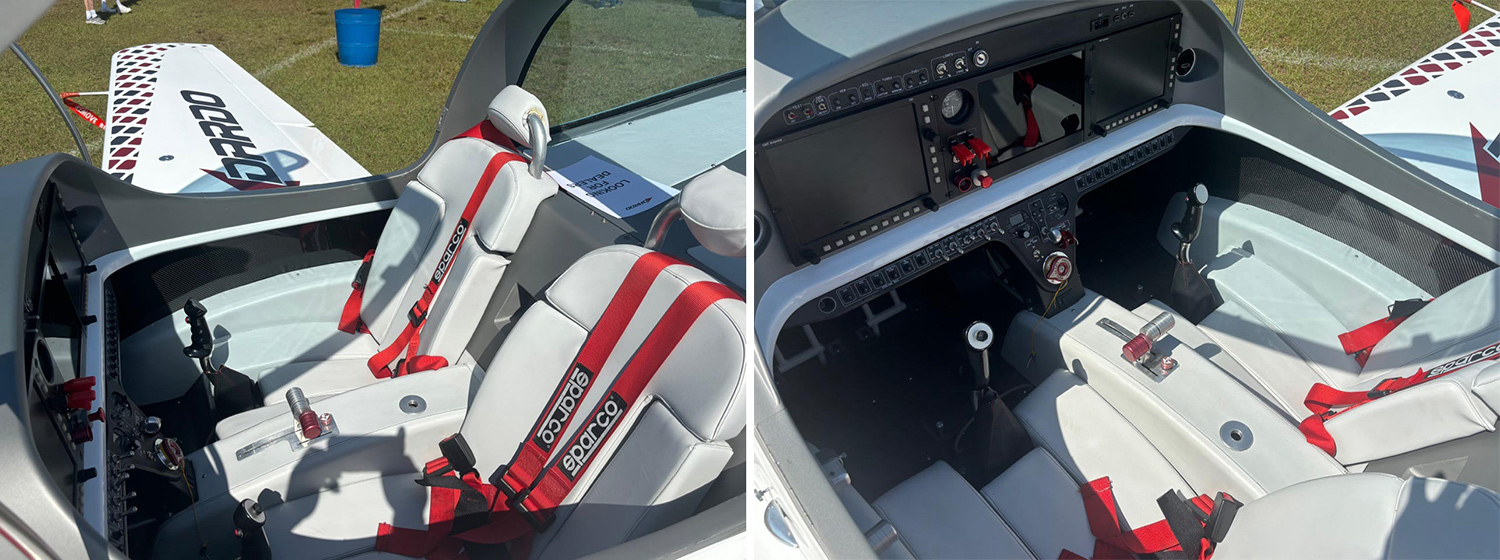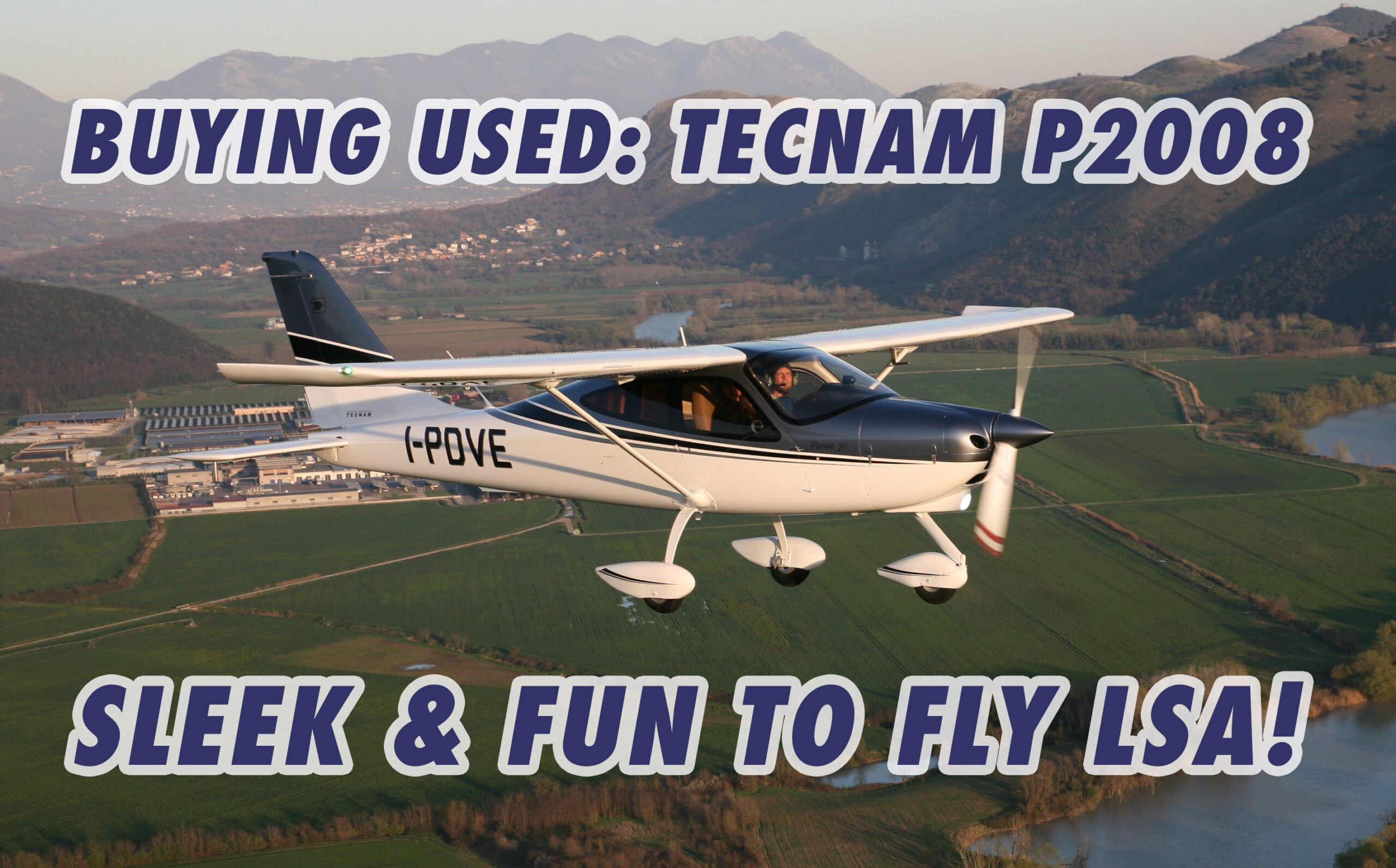
Most of the factory-built Light Sport aircraft that rolled after the FAA defined the category in 2004 were rather utilitarian—with rudimentary avionics and spartan interiors. Some of today’s Light Sport planes, however, are better equipped and more luxurious inside than GA planes that cost significantly more. Tecnam Aircraft was among the first manufacturers to recognize there was a market for upscale LSAs, and it responded with the P2008. The plane has become one of the company’s most popular aircraft. “I don’t think there’s a better value out there when you look at ownership costs and resale price,” contends Mark Gregor, a former Tecnam dealer and long-time P2008 owner. “I don’t consider it an LSA…just a top choice for a two-seat aircraft.” If buying a used P2008 is something you’re contemplating, then this article is for you. It will introduce you to the aircraft, model variations and flight characteristics, as well as provide advice for a pre-buy inspection and long-term ownership.


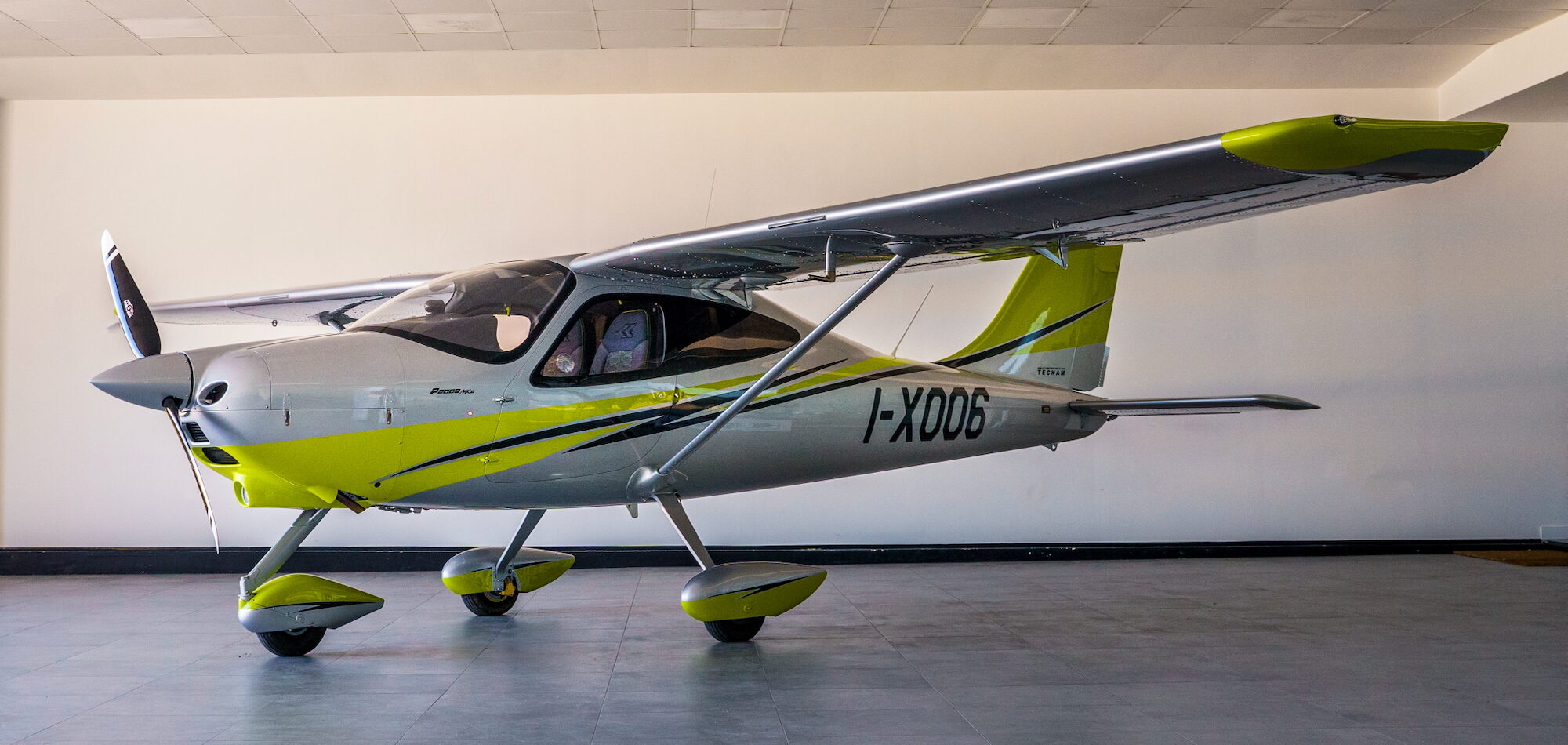
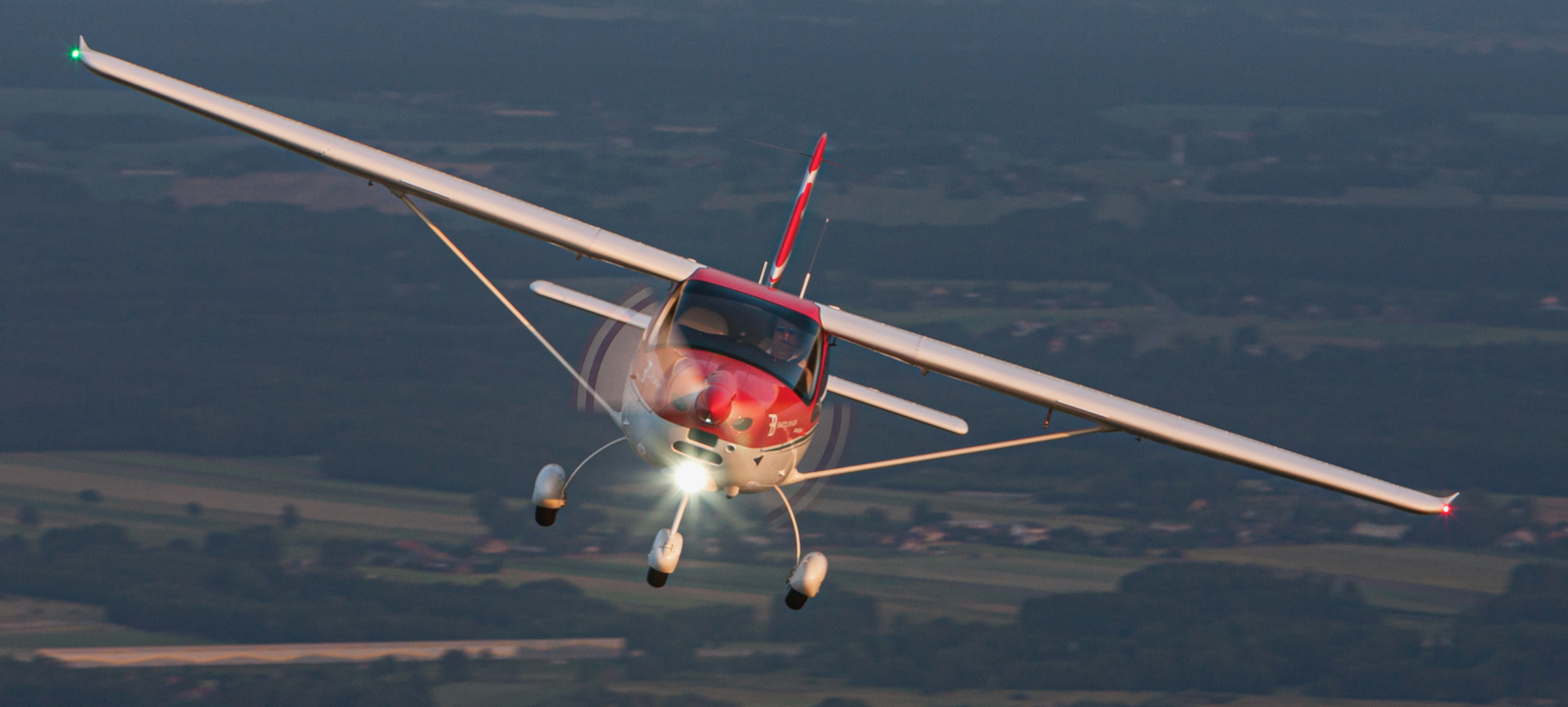
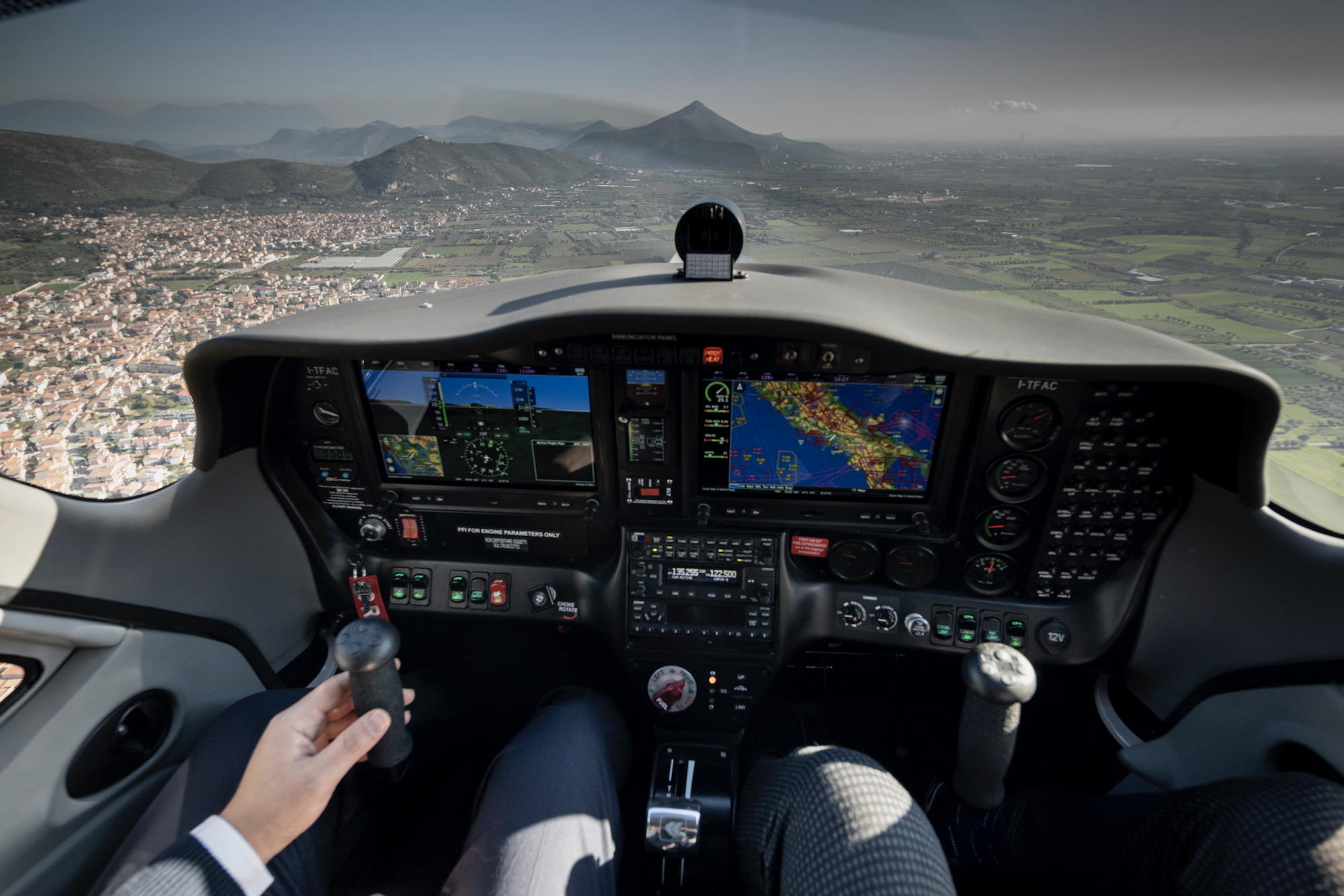 Those who’ve flown the plane say engine choice does make a noticeable difference in performance. P2008s are typically heavier than comparable LSAs. Pilots who’ve tried the 912 and 914 versions say the extra horsepower of the turbocharged Rotax greatly improves the plane’s rate of climb, especially on hot days.
Those who’ve flown the plane say engine choice does make a noticeable difference in performance. P2008s are typically heavier than comparable LSAs. Pilots who’ve tried the 912 and 914 versions say the extra horsepower of the turbocharged Rotax greatly improves the plane’s rate of climb, especially on hot days.
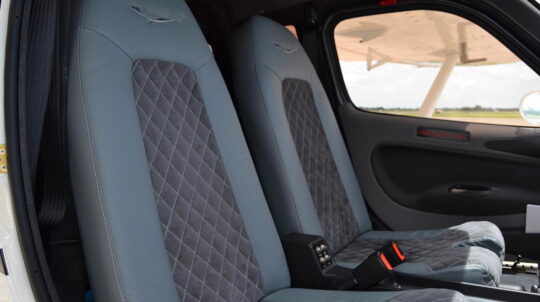
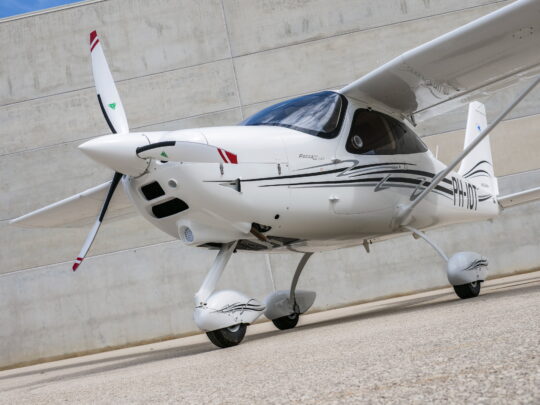
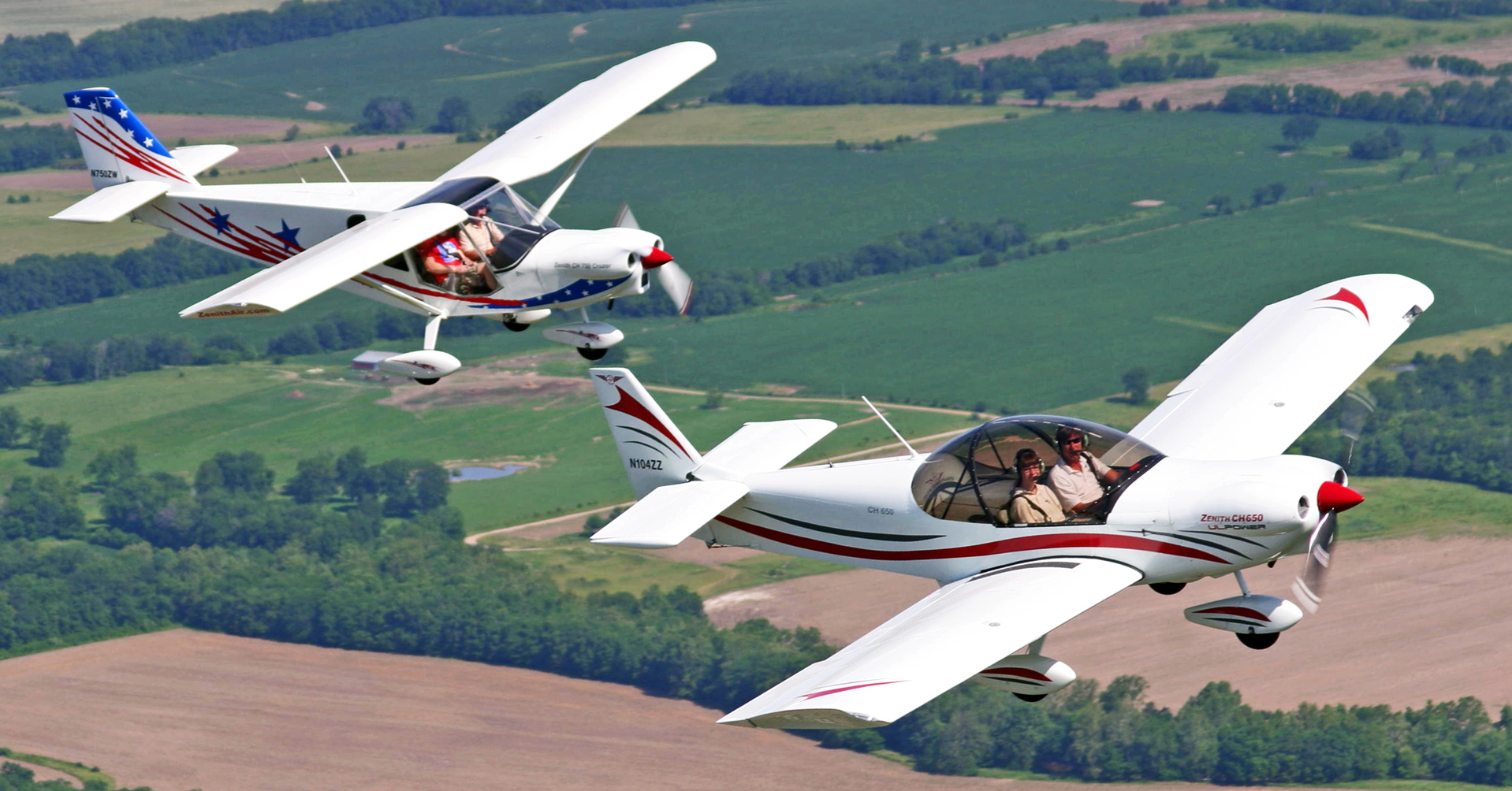 Purchasing a used airplane can be risky because it’s sometimes difficult to determine whether the aircraft has been taken care of properly. Buying a used kit aircraft? Even riskier. Not only do you have to worry about wear and tear, but also whether the builder knew what they were doing. But that doesn’t mean buying one is foolish. It might allow you to find an aircraft that truly fits your needs, and possibly save you money because its home-built origin will likely reduce the price.
If you feel comfortable going this direction, then a used Zenith is worth looking at—and if you don’t, remember that Zenith has also made the CH 750 as a factory-built SLSA, of which there are currently 42 registered in the U.S. Anyway, the company has been making kits for three decades and it has a great reputation in the Light Sport world. Its STOL CH 750 model is especially popular among builders, and you can find used ones up for sale fairly often. This article is an introduction to the aircraft and will address some important considerations if you’re thinking of buying one that’s already been in the air.
Purchasing a used airplane can be risky because it’s sometimes difficult to determine whether the aircraft has been taken care of properly. Buying a used kit aircraft? Even riskier. Not only do you have to worry about wear and tear, but also whether the builder knew what they were doing. But that doesn’t mean buying one is foolish. It might allow you to find an aircraft that truly fits your needs, and possibly save you money because its home-built origin will likely reduce the price.
If you feel comfortable going this direction, then a used Zenith is worth looking at—and if you don’t, remember that Zenith has also made the CH 750 as a factory-built SLSA, of which there are currently 42 registered in the U.S. Anyway, the company has been making kits for three decades and it has a great reputation in the Light Sport world. Its STOL CH 750 model is especially popular among builders, and you can find used ones up for sale fairly often. This article is an introduction to the aircraft and will address some important considerations if you’re thinking of buying one that’s already been in the air.
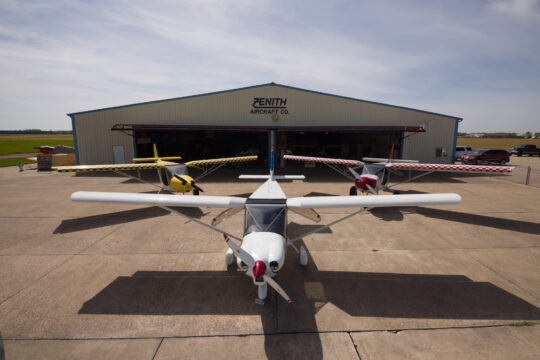
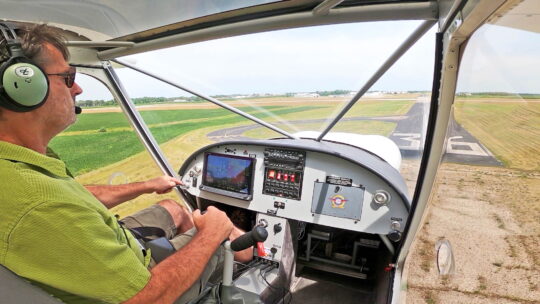
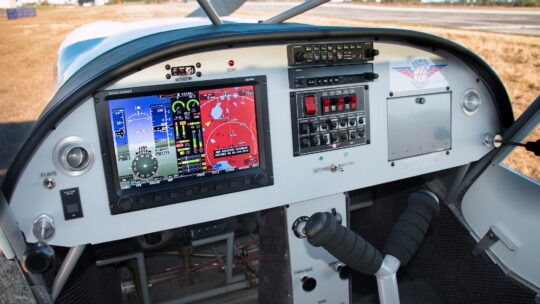
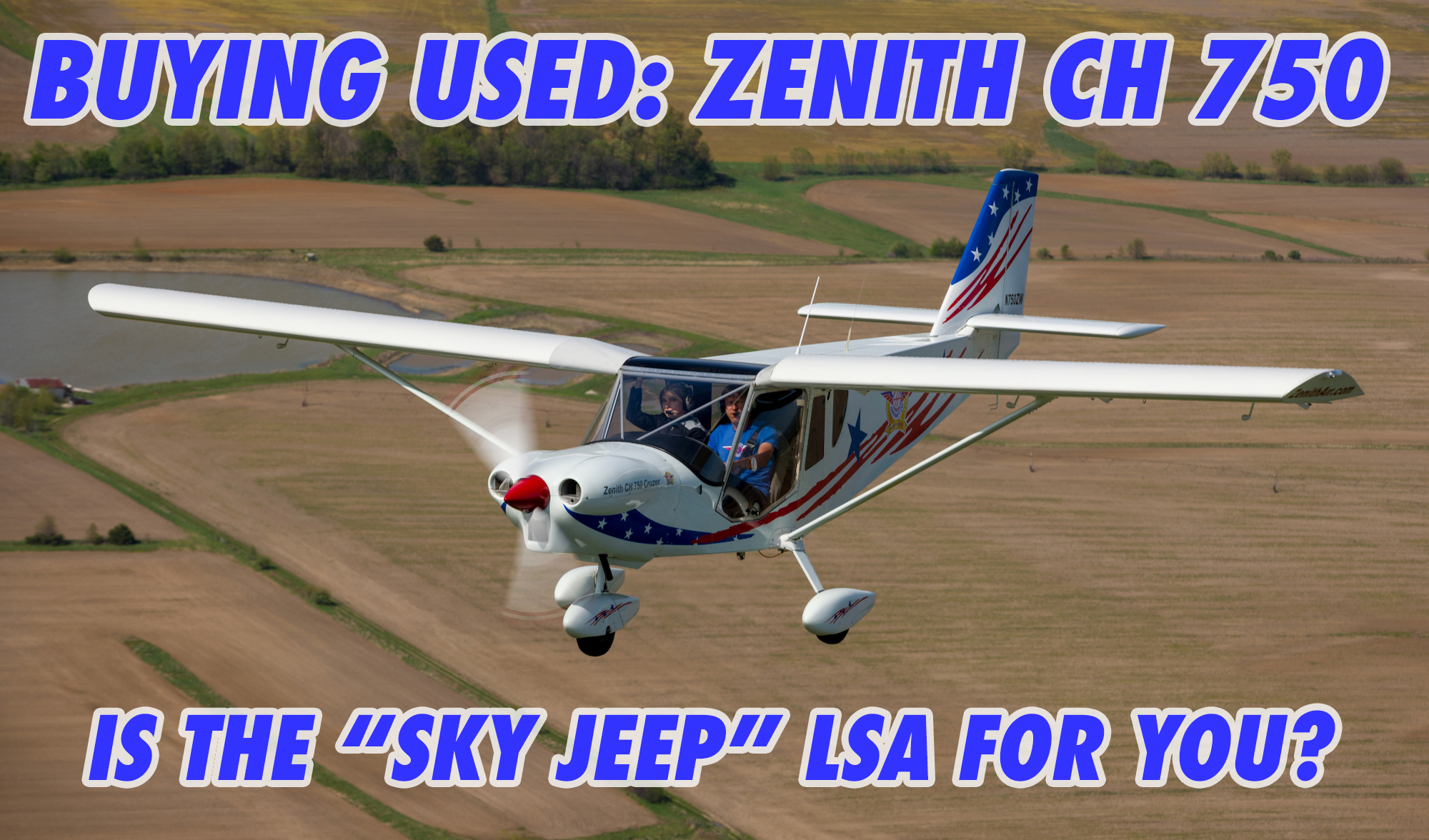
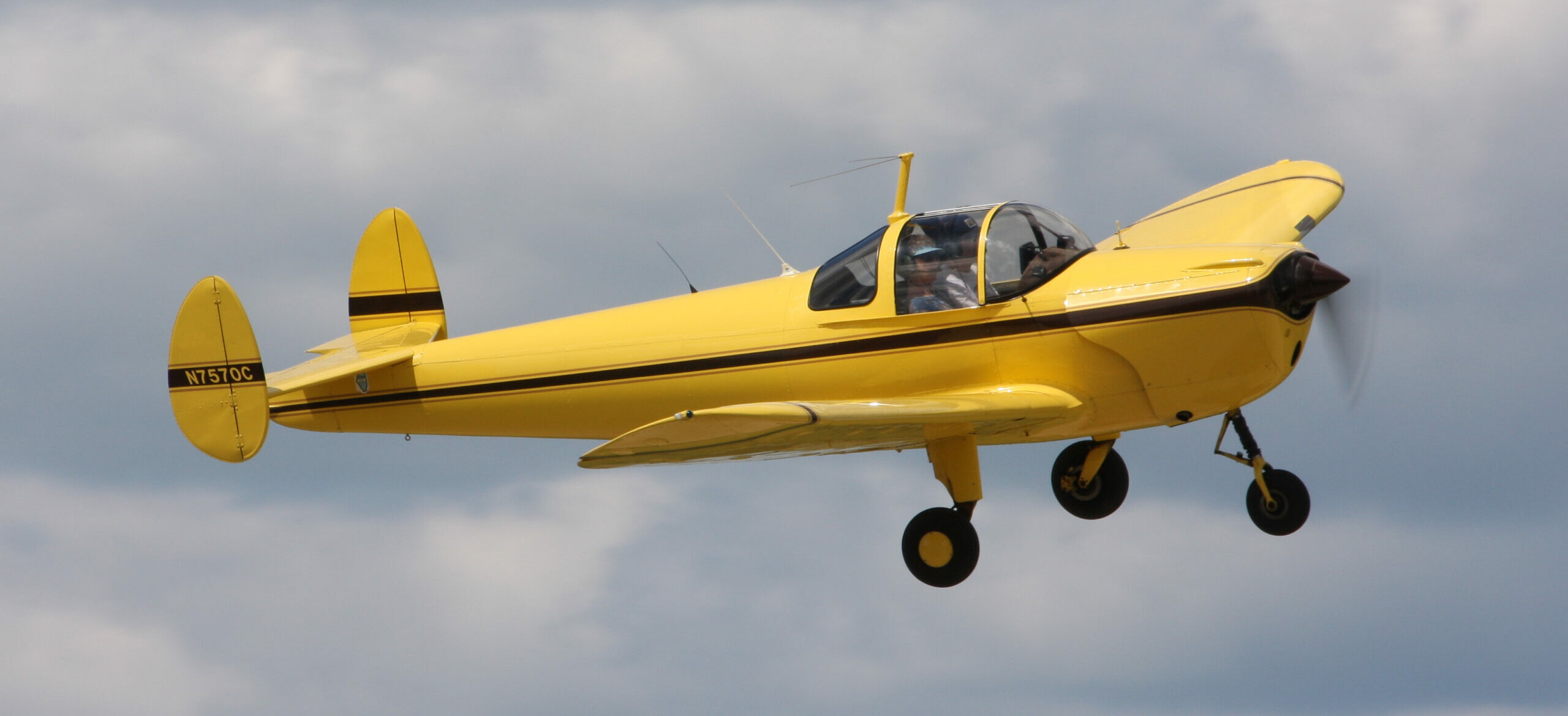 Few legacy GA aircraft are as easily recognizable as the
Few legacy GA aircraft are as easily recognizable as the 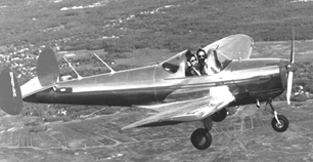 Fred Weick, an aeronautical engineer who would later create the
Fred Weick, an aeronautical engineer who would later create the 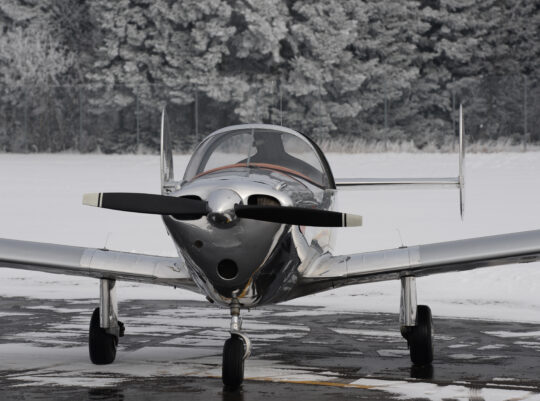 Production of the civilian Ercoupe resumed in 1945, and by the end of 1946 some 4300 415-C models were sold at a price of $2665 (about $44,000 in today’s money). The collapse of general aviation sales in the late 40s led ERCO to sell off the Ercoupe. A series of companies bought and sold the rights to the plane, including Aeronca, Forney (which introduced rudder pedals in its F-1A model, Alon (which was started by two former Beechcraft executives) and Mooney. Alon put a larger engine on its A-2 and A-2A models, adding rudder pedals to help counteract the increased P-factor. Alon also upgraded the seats and instrument panel, as well as replacing the oil/rubber dampening landing gear with spring steel. Mooney, which christened the plane the M10 Cadet, ditched the twin tail design for a single fin with a vertical leading edge to match its other planes. Mooney sold the type certificate in 1974 to Univair. The company continues to produce replacement parts and provide technical assistance to Ercoupe owners to this day. Some 2000 of the 6000 Ercoupes built are still around, but it may be that only about 1200 of them are truly airworthy.
Production of the civilian Ercoupe resumed in 1945, and by the end of 1946 some 4300 415-C models were sold at a price of $2665 (about $44,000 in today’s money). The collapse of general aviation sales in the late 40s led ERCO to sell off the Ercoupe. A series of companies bought and sold the rights to the plane, including Aeronca, Forney (which introduced rudder pedals in its F-1A model, Alon (which was started by two former Beechcraft executives) and Mooney. Alon put a larger engine on its A-2 and A-2A models, adding rudder pedals to help counteract the increased P-factor. Alon also upgraded the seats and instrument panel, as well as replacing the oil/rubber dampening landing gear with spring steel. Mooney, which christened the plane the M10 Cadet, ditched the twin tail design for a single fin with a vertical leading edge to match its other planes. Mooney sold the type certificate in 1974 to Univair. The company continues to produce replacement parts and provide technical assistance to Ercoupe owners to this day. Some 2000 of the 6000 Ercoupes built are still around, but it may be that only about 1200 of them are truly airworthy.
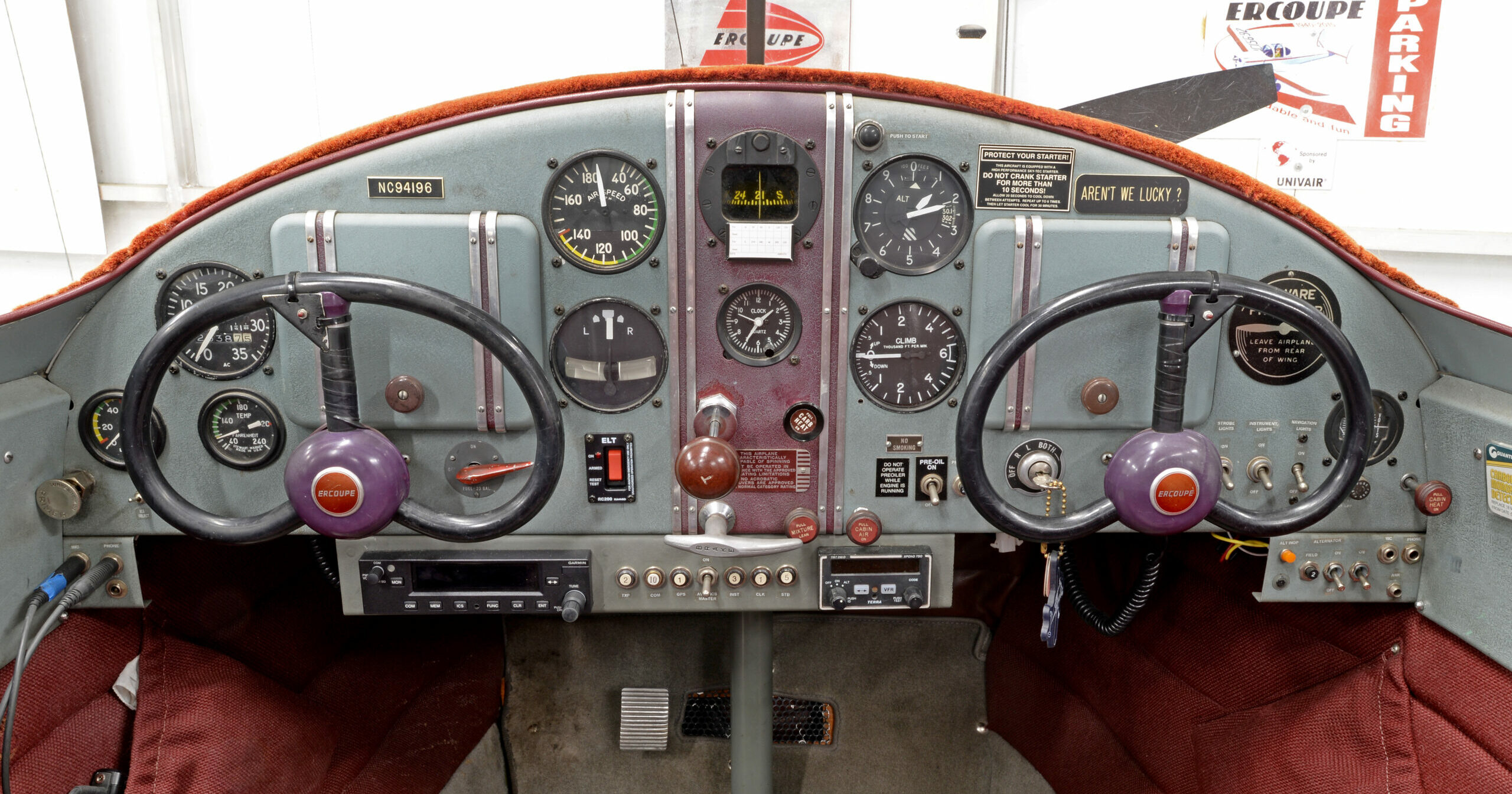
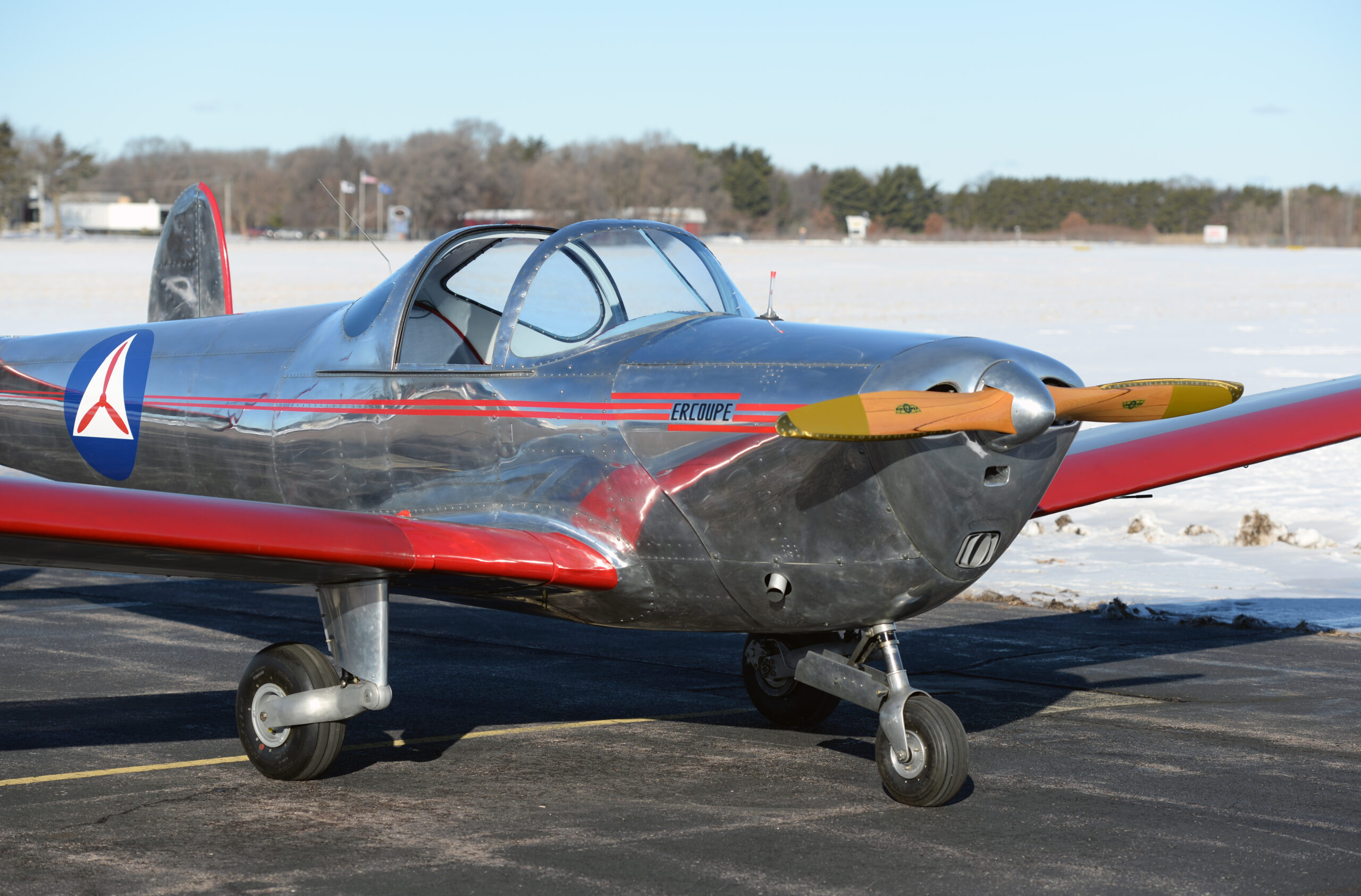
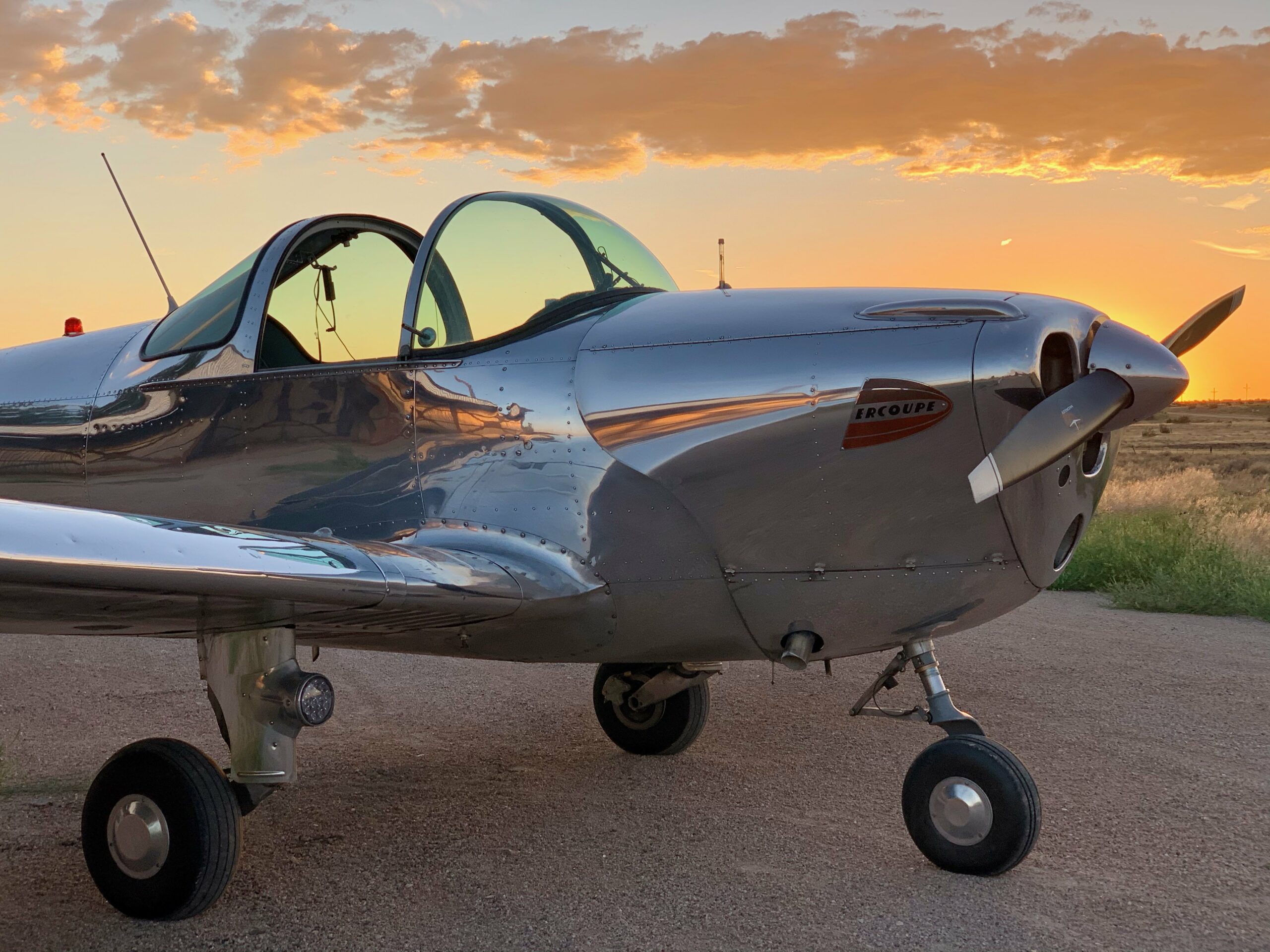

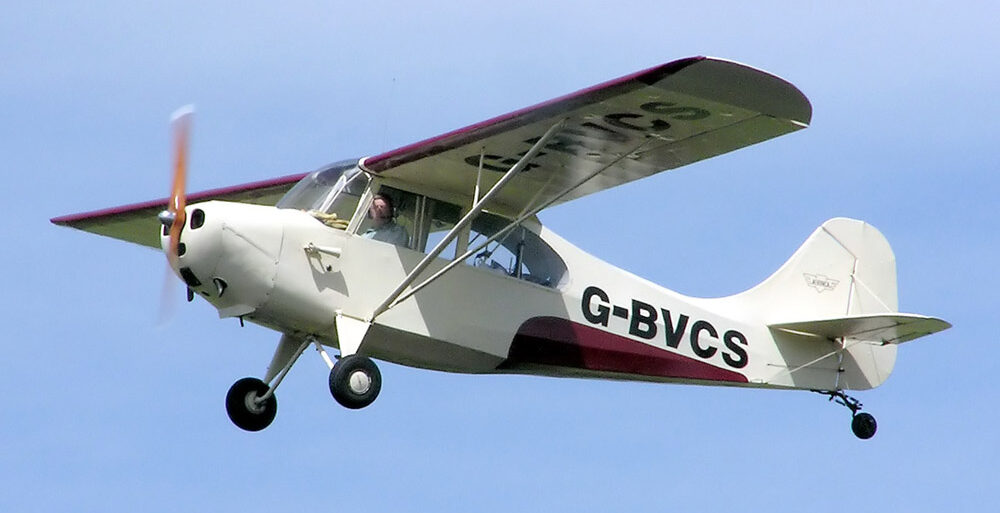
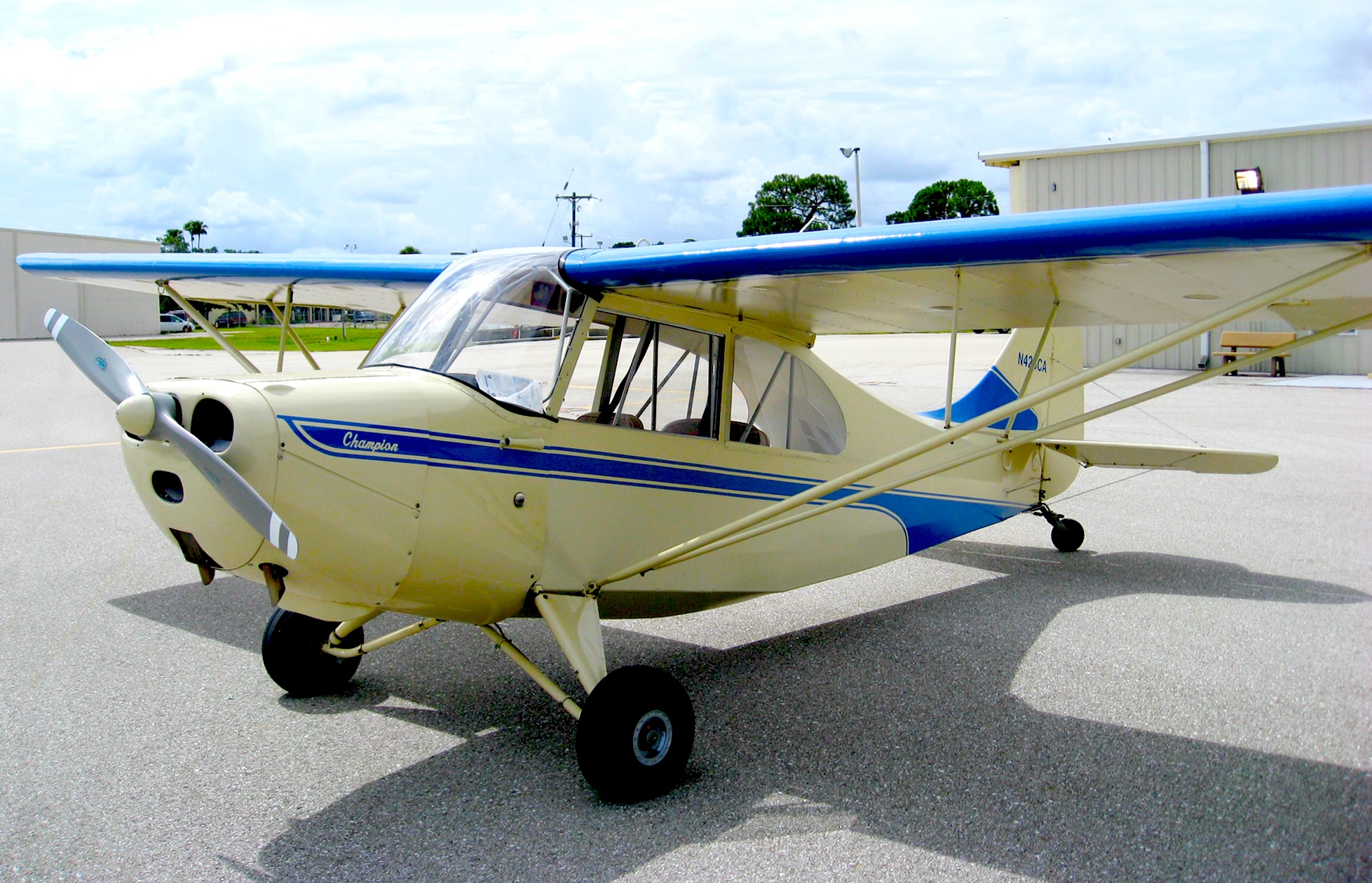 Aeronca Aircraft Corporation began producing Champs in the U.S. in 1945. According to aviation historian Richard Harris, the plane was specifically developed to compete against the Cub and it incorporated some of the aviation lessons of World War II to help it do so. The first model, the 7AC, sold in amazing numbers, with Aeronca reportedly producing an average of 30 Champs a day between 1946 and 1947. However, post-war economic changes brought an end to such massive sales for Aeronca, as well as for all of its competitors. Aeronca put together more than 8000 Champs before it quit making light aircraft in 1951.
Aeronca sold the design to Champion Aircraft in 1954. Champion made a few variants of the plane and later used elements of the design to produce the Citabria. Bellanca Aircraft purchased Champion in 1970, but sold very few Champs before it ceased production in the early 1980s. American Champion Aircraft Corporation acquired the design in 1989, and with the creation of the Sport category around 2007 came out with a model specifically for Sport Pilots. The plane was dropped from production in 2019.
Aeronca Aircraft Corporation began producing Champs in the U.S. in 1945. According to aviation historian Richard Harris, the plane was specifically developed to compete against the Cub and it incorporated some of the aviation lessons of World War II to help it do so. The first model, the 7AC, sold in amazing numbers, with Aeronca reportedly producing an average of 30 Champs a day between 1946 and 1947. However, post-war economic changes brought an end to such massive sales for Aeronca, as well as for all of its competitors. Aeronca put together more than 8000 Champs before it quit making light aircraft in 1951.
Aeronca sold the design to Champion Aircraft in 1954. Champion made a few variants of the plane and later used elements of the design to produce the Citabria. Bellanca Aircraft purchased Champion in 1970, but sold very few Champs before it ceased production in the early 1980s. American Champion Aircraft Corporation acquired the design in 1989, and with the creation of the Sport category around 2007 came out with a model specifically for Sport Pilots. The plane was dropped from production in 2019.
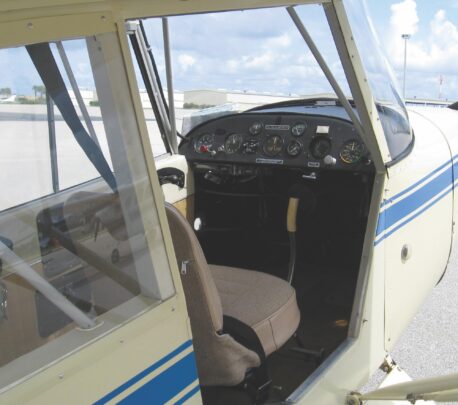 The first Champs had 65-hp Continental engines, but more powerful engines were used from 1947 onward. The BCM and 7DC models had 85hp Continentals, and the electrical system-equipped 7EC had a 90-hp Continental powerplant. Aeronca enlarged the tail and improved the brakes on the more powerful Champs to improve handling in the air and on the ground. Other engines were also tried over the years, including a Lycoming 0-235, a two-cylinder Franklin with 60hp and a 100hp Continental 0-200-A in the last variant made in 2007. The latter model was a revised version of the 7EC, and it included metal-spar wings instead of the traditional wood ones and aluminum gear legs.
Specifications for all the Champ variants are readily available online, but the original 7AC had a cruise speed of around 85 mph (95 mph max.) with climb rate of 370 fpm, 38 mph stall, 1220 pounds gross weight with a 480 pounds payload, and a 13 gallon fuel tank. The 7EC might be the cream of the early crop of Champs. With its 85hp engine, electric starter (No more hand propping!), long-throw oleo strut main gear, nicer interior and increased gross weight (1350 pounds compared to the AC’s 1220 pounds) the model is the perfect example of a vintage flier, according to Tabor Coates, a flight instructor in the Boston area and a former Champ owner.
“The AC’s 65 hp engine is a little small for two people, so the EC’s larger engine makes a significant difference in climb in warmer weather,” details Tabor. “The Champ’s a well-mannered plane, and it’s very forgiving to land with its so-called ‘no bounce landing gear.’ The plane is heavier in roll compared to a Cub, and you must use the rudder because of adverse yaw, but it flys well. It’s large enough that almost anyone can easily get inside for a ride, and it can usually be found at a much better price than a Cub,” he adds.
Both Coates and Weigel praise the plane’s gentle stall characteristics and the panoramic view it offers occupants. They call it a perfect $100 hamburger machine. Unlike the Cub, a Champ is piloted from the front seat when flown solo. This means you don’t have to serpentine while taxiing since you can see over the cowl. The plane doesn’t have flaps, so descents can require slipping. Inside, the plane’s avionics are minimal, but the seats are comfortable and there’s plenty of elbow room.
The first Champs had 65-hp Continental engines, but more powerful engines were used from 1947 onward. The BCM and 7DC models had 85hp Continentals, and the electrical system-equipped 7EC had a 90-hp Continental powerplant. Aeronca enlarged the tail and improved the brakes on the more powerful Champs to improve handling in the air and on the ground. Other engines were also tried over the years, including a Lycoming 0-235, a two-cylinder Franklin with 60hp and a 100hp Continental 0-200-A in the last variant made in 2007. The latter model was a revised version of the 7EC, and it included metal-spar wings instead of the traditional wood ones and aluminum gear legs.
Specifications for all the Champ variants are readily available online, but the original 7AC had a cruise speed of around 85 mph (95 mph max.) with climb rate of 370 fpm, 38 mph stall, 1220 pounds gross weight with a 480 pounds payload, and a 13 gallon fuel tank. The 7EC might be the cream of the early crop of Champs. With its 85hp engine, electric starter (No more hand propping!), long-throw oleo strut main gear, nicer interior and increased gross weight (1350 pounds compared to the AC’s 1220 pounds) the model is the perfect example of a vintage flier, according to Tabor Coates, a flight instructor in the Boston area and a former Champ owner.
“The AC’s 65 hp engine is a little small for two people, so the EC’s larger engine makes a significant difference in climb in warmer weather,” details Tabor. “The Champ’s a well-mannered plane, and it’s very forgiving to land with its so-called ‘no bounce landing gear.’ The plane is heavier in roll compared to a Cub, and you must use the rudder because of adverse yaw, but it flys well. It’s large enough that almost anyone can easily get inside for a ride, and it can usually be found at a much better price than a Cub,” he adds.
Both Coates and Weigel praise the plane’s gentle stall characteristics and the panoramic view it offers occupants. They call it a perfect $100 hamburger machine. Unlike the Cub, a Champ is piloted from the front seat when flown solo. This means you don’t have to serpentine while taxiing since you can see over the cowl. The plane doesn’t have flaps, so descents can require slipping. Inside, the plane’s avionics are minimal, but the seats are comfortable and there’s plenty of elbow room.
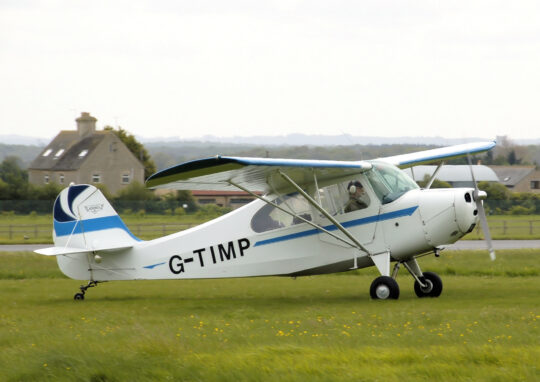
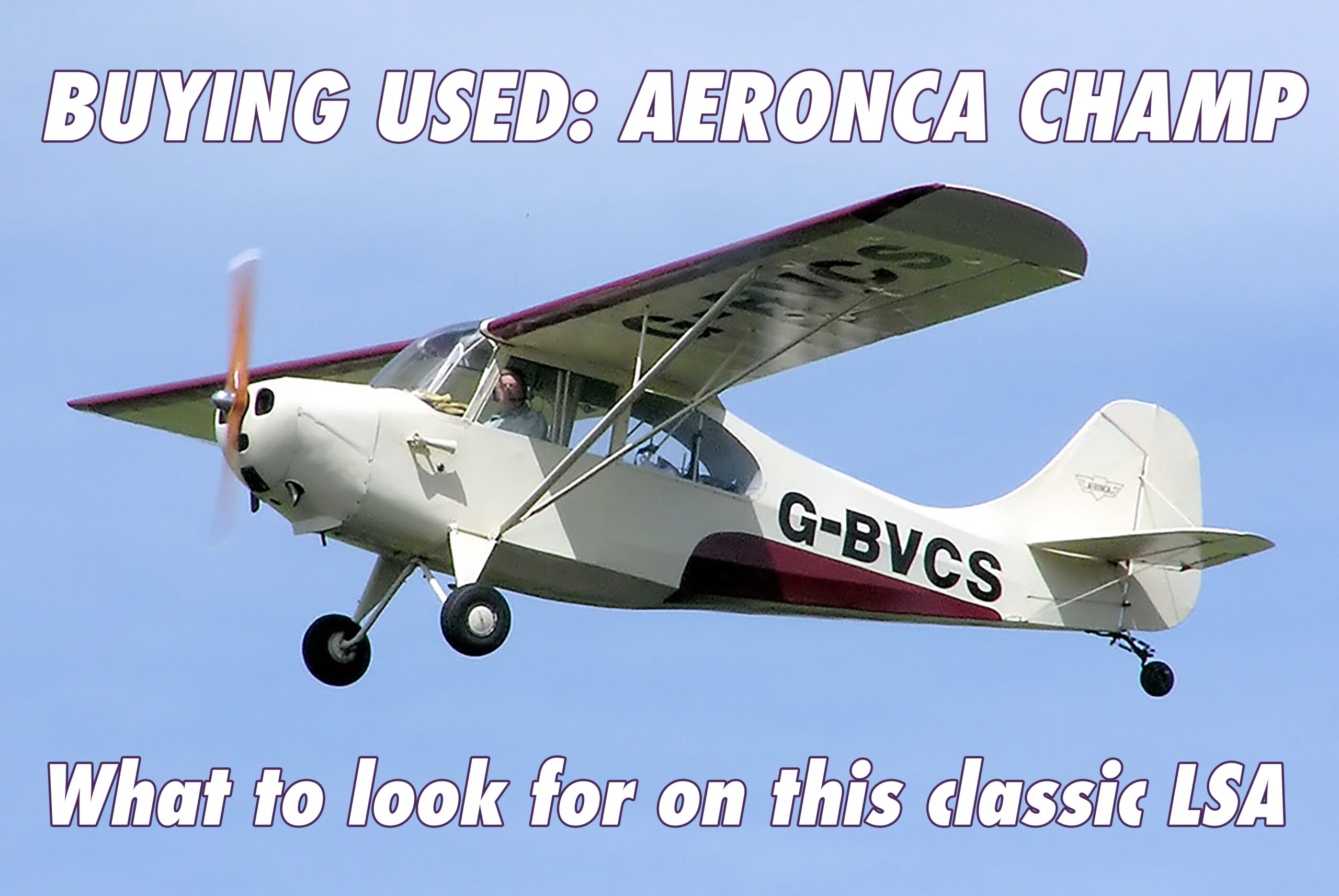
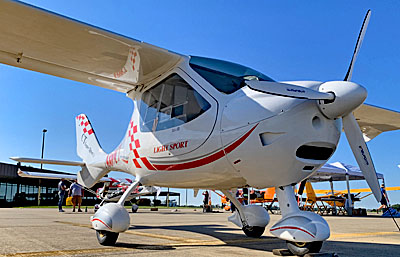 If you’ve ever shopped for a used sport plane you’ve probably noticed there are almost always a number of
If you’ve ever shopped for a used sport plane you’ve probably noticed there are almost always a number of 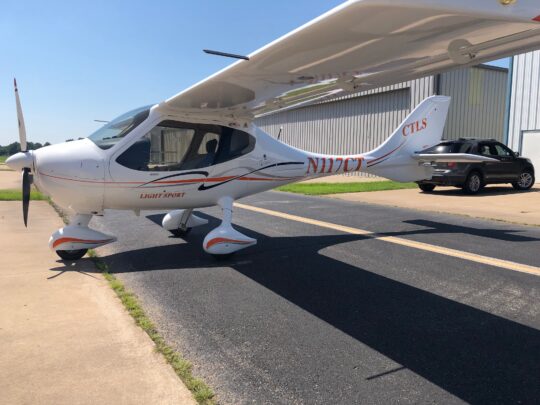 There have been a number of CT models/variants over the years. The original CT flew in 1996 and was superseded by the CT2K in 2000. But as Dan Johnson has reported, it was the CTSW ”short wing” developed just after that helped Flight Design become an LSA market leader. While the CTSW proved popular, it had its critics. Flight Design responded by introducing the CTLS in 2008 to make the plane a little more forgiving and to introduce other improvements.
Around the same time, the company produced a slightly heavier and slower all-metal version for flight training, the CTMC (metal concept), and the CTLS-Lite, a lighter and reduced feature/budget model CT. Quick to follow were the CTLE, a version for law enforcement featuring a wing mounted camera, the fuel injected Rotax 912iS powered CTLSi, the CT Supralight for the European ultralight market, and the CTLS GT with a Rotax 914.
If you’re thinking that it’s going to be difficult to decide which model to buy, stop. The odds are good your choice will be limited to either a CTSW or CTLS since these models were made in the greatest numbers. This article will focus on them exclusively.
There have been a number of CT models/variants over the years. The original CT flew in 1996 and was superseded by the CT2K in 2000. But as Dan Johnson has reported, it was the CTSW ”short wing” developed just after that helped Flight Design become an LSA market leader. While the CTSW proved popular, it had its critics. Flight Design responded by introducing the CTLS in 2008 to make the plane a little more forgiving and to introduce other improvements.
Around the same time, the company produced a slightly heavier and slower all-metal version for flight training, the CTMC (metal concept), and the CTLS-Lite, a lighter and reduced feature/budget model CT. Quick to follow were the CTLE, a version for law enforcement featuring a wing mounted camera, the fuel injected Rotax 912iS powered CTLSi, the CT Supralight for the European ultralight market, and the CTLS GT with a Rotax 914.
If you’re thinking that it’s going to be difficult to decide which model to buy, stop. The odds are good your choice will be limited to either a CTSW or CTLS since these models were made in the greatest numbers. This article will focus on them exclusively.
 “I would look for a 2009-2010 CTLS because of the simplicity of its carbureted engine and overall build quality,” recommends Tom Peghiny, EAA Hall of Famer and the man behind the importation of CTs into the U.S. until his retirement in 2022. He says many of the planes from this period came with autopilots and glass avionics, and it’s common to find many have been upgraded over the years.
All CTs feature composite bodies, a blessing or a curse depending upon your viewpoint. (More on this later.) Flight Design uses a carbon fiber-foam-carbon fiber and Kevlar laminate over Rohacell foam for the wings and tail, and over Airex foam for the fuselage core. The LS model introduced composite landing gear.
“I would look for a 2009-2010 CTLS because of the simplicity of its carbureted engine and overall build quality,” recommends Tom Peghiny, EAA Hall of Famer and the man behind the importation of CTs into the U.S. until his retirement in 2022. He says many of the planes from this period came with autopilots and glass avionics, and it’s common to find many have been upgraded over the years.
All CTs feature composite bodies, a blessing or a curse depending upon your viewpoint. (More on this later.) Flight Design uses a carbon fiber-foam-carbon fiber and Kevlar laminate over Rohacell foam for the wings and tail, and over Airex foam for the fuselage core. The LS model introduced composite landing gear.
 CTs have a reputation for being challenging to land, according to several CFIs contacted for this article. Some pilots have found them difficult to slow down because of the sleek fuselage, and others have trouble with pitch control at slower speeds. These factors, combined with the springy, aluminum landing gear on earlier models, sometimes meant CTs were bounced down runways.
One advantage of the LS model is its composite landing gear, which helps soak up less than perfect landings. Another possible advantage of the LS over the SW is its slightly longer length and greater wingspan, which reportedly offer better longitudinal stability. “The LS is less squirrely than the SW at lower speeds next to the ground,” contends CFI Helen Woods, owner of Chesapeake Sport Pilot, a Maryland flight school and maintenance center that has considerable experience with Flight Design’s planes.
Review owner comments on the internet and you’ll find that all CTs require solid stick and rudder skills. The planes demand attention to maintain coordinated flight, especially the shorter winged SW. Some critics say the SW is a little too difficult to fly, but others are up for the challenge in return for increased speed and payload.
“It’s possible to teach someone to fly the SW safely,” says Woods, “but it does take specific training and pilots need to fly frequently to remain proficient.” (Those who buy new planes from Flight Design in the U.S. are required to take transition training, according to Gutman.)
CTs have a reputation for being challenging to land, according to several CFIs contacted for this article. Some pilots have found them difficult to slow down because of the sleek fuselage, and others have trouble with pitch control at slower speeds. These factors, combined with the springy, aluminum landing gear on earlier models, sometimes meant CTs were bounced down runways.
One advantage of the LS model is its composite landing gear, which helps soak up less than perfect landings. Another possible advantage of the LS over the SW is its slightly longer length and greater wingspan, which reportedly offer better longitudinal stability. “The LS is less squirrely than the SW at lower speeds next to the ground,” contends CFI Helen Woods, owner of Chesapeake Sport Pilot, a Maryland flight school and maintenance center that has considerable experience with Flight Design’s planes.
Review owner comments on the internet and you’ll find that all CTs require solid stick and rudder skills. The planes demand attention to maintain coordinated flight, especially the shorter winged SW. Some critics say the SW is a little too difficult to fly, but others are up for the challenge in return for increased speed and payload.
“It’s possible to teach someone to fly the SW safely,” says Woods, “but it does take specific training and pilots need to fly frequently to remain proficient.” (Those who buy new planes from Flight Design in the U.S. are required to take transition training, according to Gutman.)
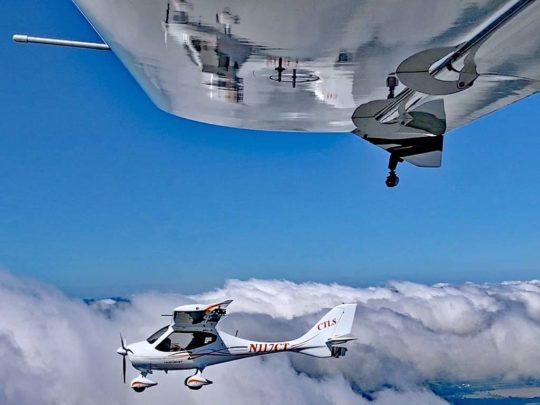 Anyone buying a used aircraft should have a pre-buy inspection done by an A&P who’s familiar with Flight Design’s planes, according to Mike Ripley and Hannah Lagno, who oversee aircraft maintenance at Chesapeake Sport Pilot, LLC. They’ve both worked on numerous CTs and know what to look for during a pre-buy inspection.
“We’ve seen a lot of bent landing gear and bent rudder pedals,” said Ripley when asked about CTs and rough landings. “And the composite bodies need to be inspected for delamination, especially if the plane’s been kept outside.”
“Always check the tail area for water,” warns Lagno. “It can collect inside there and cause corrosion which can freeze the controls or, in the winter, split the composite.”
The engines on CTs should also be gone over by someone familiar with Rotaxes. As an early player in Light Sport, CTs were among the first LSAs many A&Ps ever worked on. Woods says some weren’t as knowledgeable about Rotaxes as they should have been. “Look for specific Rotax maintenance things in the logbook—like rubber replacement and carb floats,” she suggests. “And see if all of the service bulletins have been followed.” (There have been relatively few SBs considering nearly 30 years of production.)
Anyone buying a used aircraft should have a pre-buy inspection done by an A&P who’s familiar with Flight Design’s planes, according to Mike Ripley and Hannah Lagno, who oversee aircraft maintenance at Chesapeake Sport Pilot, LLC. They’ve both worked on numerous CTs and know what to look for during a pre-buy inspection.
“We’ve seen a lot of bent landing gear and bent rudder pedals,” said Ripley when asked about CTs and rough landings. “And the composite bodies need to be inspected for delamination, especially if the plane’s been kept outside.”
“Always check the tail area for water,” warns Lagno. “It can collect inside there and cause corrosion which can freeze the controls or, in the winter, split the composite.”
The engines on CTs should also be gone over by someone familiar with Rotaxes. As an early player in Light Sport, CTs were among the first LSAs many A&Ps ever worked on. Woods says some weren’t as knowledgeable about Rotaxes as they should have been. “Look for specific Rotax maintenance things in the logbook—like rubber replacement and carb floats,” she suggests. “And see if all of the service bulletins have been followed.” (There have been relatively few SBs considering nearly 30 years of production.)
 Ripley and Lagno say concerns about the planes’ composite bodies shouldn’t automatically steer you away from them or other composite planes. They believe this type of manufacturing has come a long way in the past couple of decades, and that it is possible to make successful repairs to composite body aircraft without too much difficulty. They say keeping a CT hangered is the best way to ensure the longest lifespan of the aircraft.
The sleekness of the design made possible by composite construction, however, can occasionally make CTs a little more difficult to work on. The engine’s in a tight space, and getting to the starter, for example, isn’t as straightforward as on conventionally constructed aircraft, notes Ripley.
Peghiny says “once mastered, they are fast and really a hoot to fly.” Guttmann, who owns a CTSW, says their cabins and payload capabilities put them way ahead of other Light Sport planes. “Both my father and I are 300 pounds and 6-foot-5. There’s nothing else we can both get into and fly as comfortably,” he said.
Woods highly recommends flying any CT you’re thinking of buying before writing the check. “Be sure you’re happy with what you’re getting into,” she advises.
https://www.youtube.com/watch?v=t1Gy1ezF3l0&pp=ygUdZmxpZ2h0IGRlc2lnbiBjdCBieWRhbmpvaG5zb24%3D
https://www.youtube.com/watch?v=4kBRY79lw5Y&pp=ygUdZmxpZ2h0IGRlc2lnbiBjdCBieWRhbmpvaG5zb24%3D
https://www.youtube.com/watch?v=9qVT7PVBnAY&pp=ygUdZmxpZ2h0IGRlc2lnbiBjdCBieWRhbmpvaG5zb24%3D
Ripley and Lagno say concerns about the planes’ composite bodies shouldn’t automatically steer you away from them or other composite planes. They believe this type of manufacturing has come a long way in the past couple of decades, and that it is possible to make successful repairs to composite body aircraft without too much difficulty. They say keeping a CT hangered is the best way to ensure the longest lifespan of the aircraft.
The sleekness of the design made possible by composite construction, however, can occasionally make CTs a little more difficult to work on. The engine’s in a tight space, and getting to the starter, for example, isn’t as straightforward as on conventionally constructed aircraft, notes Ripley.
Peghiny says “once mastered, they are fast and really a hoot to fly.” Guttmann, who owns a CTSW, says their cabins and payload capabilities put them way ahead of other Light Sport planes. “Both my father and I are 300 pounds and 6-foot-5. There’s nothing else we can both get into and fly as comfortably,” he said.
Woods highly recommends flying any CT you’re thinking of buying before writing the check. “Be sure you’re happy with what you’re getting into,” she advises.
https://www.youtube.com/watch?v=t1Gy1ezF3l0&pp=ygUdZmxpZ2h0IGRlc2lnbiBjdCBieWRhbmpvaG5zb24%3D
https://www.youtube.com/watch?v=4kBRY79lw5Y&pp=ygUdZmxpZ2h0IGRlc2lnbiBjdCBieWRhbmpvaG5zb24%3D
https://www.youtube.com/watch?v=9qVT7PVBnAY&pp=ygUdZmxpZ2h0IGRlc2lnbiBjdCBieWRhbmpvaG5zb24%3D
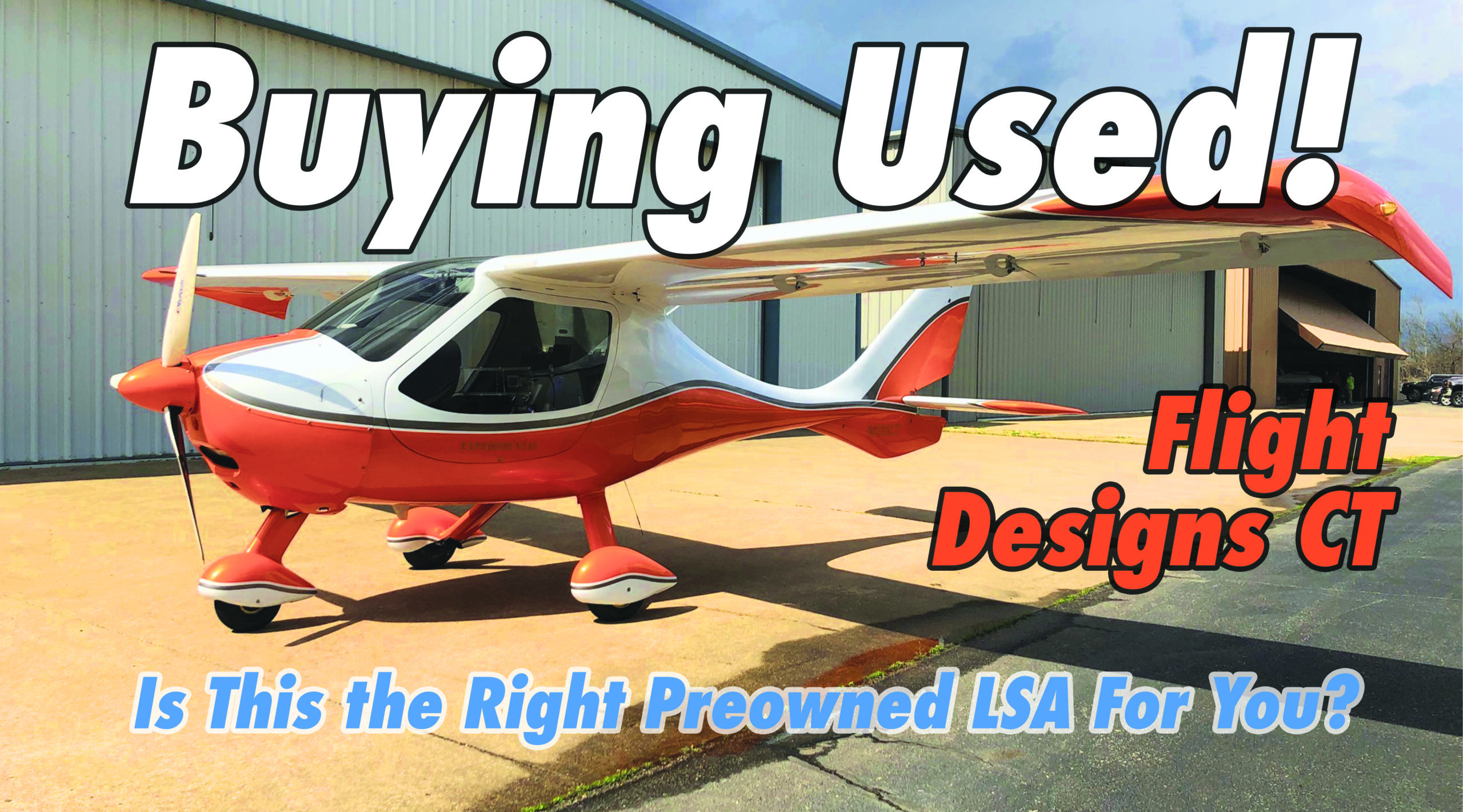
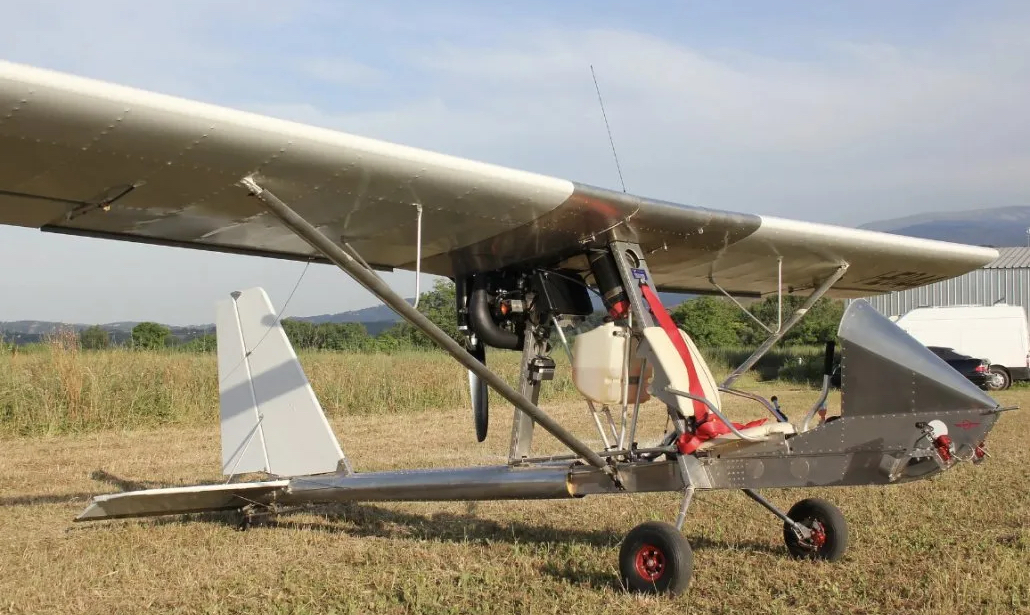
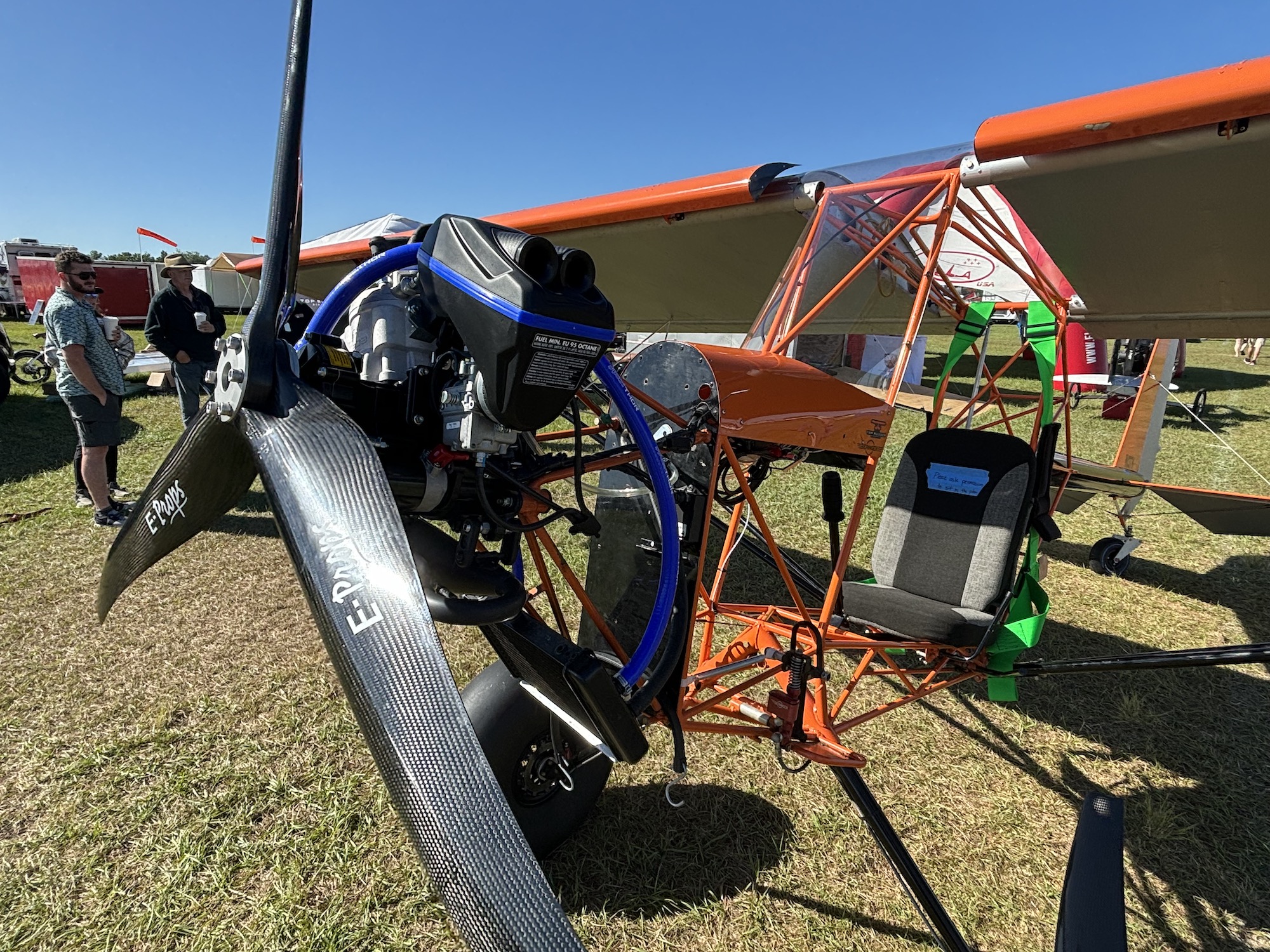 The company sold six of 10 available slots it had for planes in 2024 before the show opened on Friday. Both planes are based on a Troy Woodard design that had been around for a while, but it was only three months ago that Bryce Angel started Top Rudder to make these ultralight and light sport variants.
The company sold six of 10 available slots it had for planes in 2024 before the show opened on Friday. Both planes are based on a Troy Woodard design that had been around for a while, but it was only three months ago that Bryce Angel started Top Rudder to make these ultralight and light sport variants.
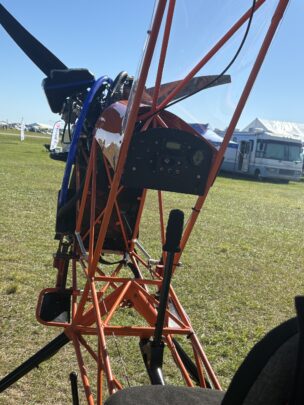 “It’s designed like a 1300-pound aircraft that’s we’ve modified for two entirely different kinds of flying,” explains Top Rudder’s Chief Engineer George Boney. “It can handle up to 200 hp, but our standard Polini 303 allows for stall speeds under 20 mph and a cruise of 50 for ultralight flying. Or, you can add another fuel tank, a slightly larger engine and tires and have an inexpensive backcountry sport plane that has real STOL capabilities.”
“It’s designed like a 1300-pound aircraft that’s we’ve modified for two entirely different kinds of flying,” explains Top Rudder’s Chief Engineer George Boney. “It can handle up to 200 hp, but our standard Polini 303 allows for stall speeds under 20 mph and a cruise of 50 for ultralight flying. Or, you can add another fuel tank, a slightly larger engine and tires and have an inexpensive backcountry sport plane that has real STOL capabilities.”